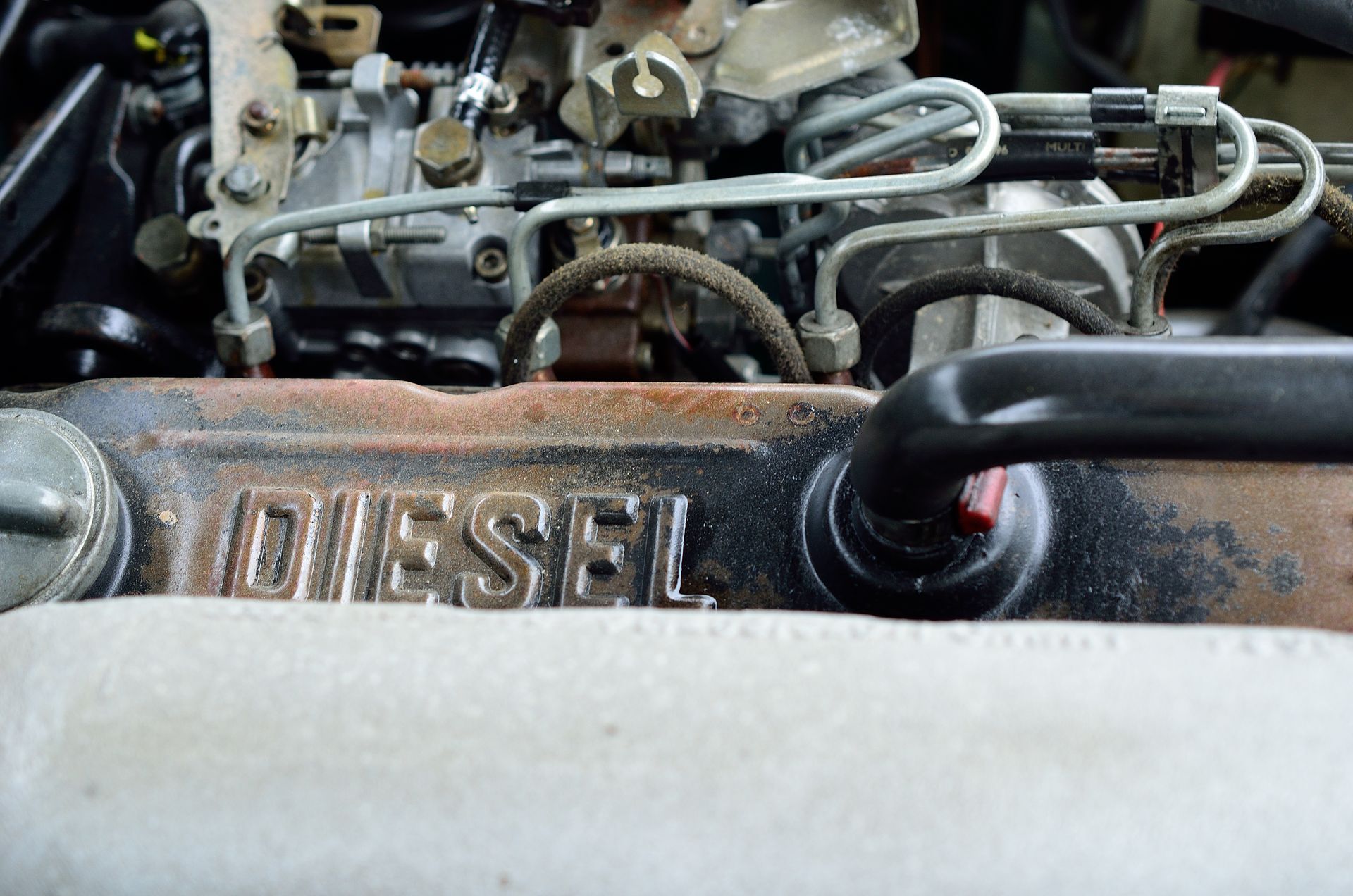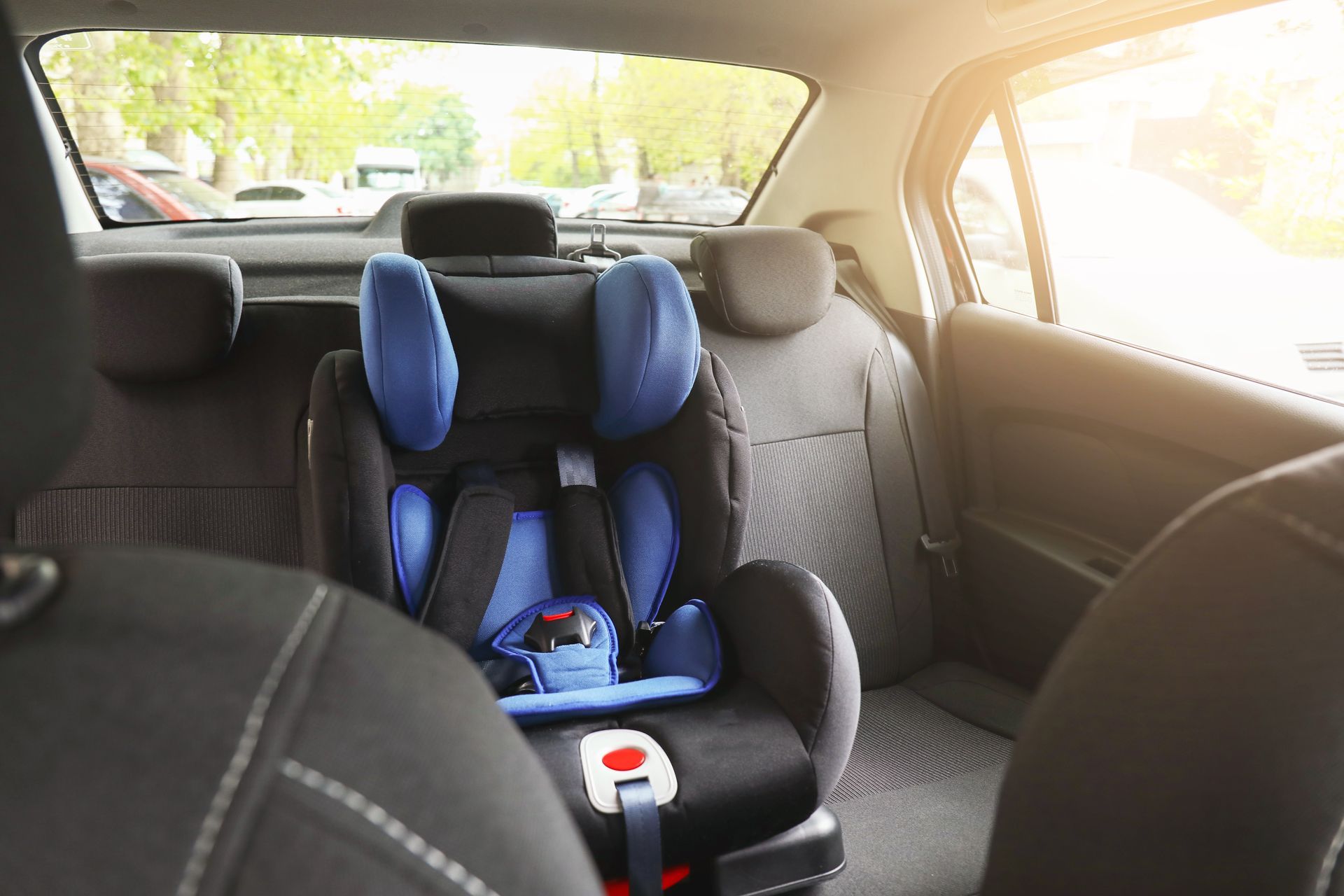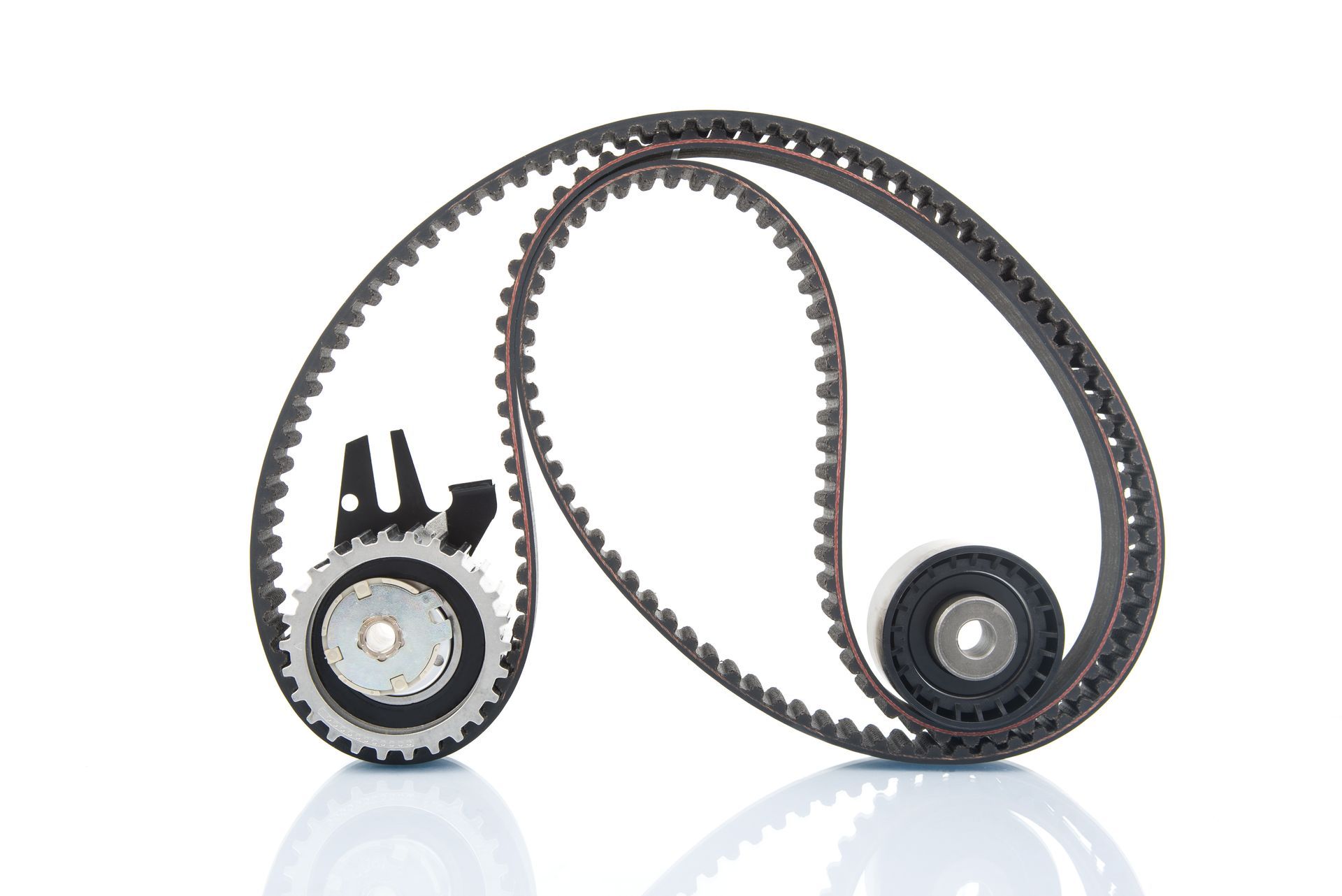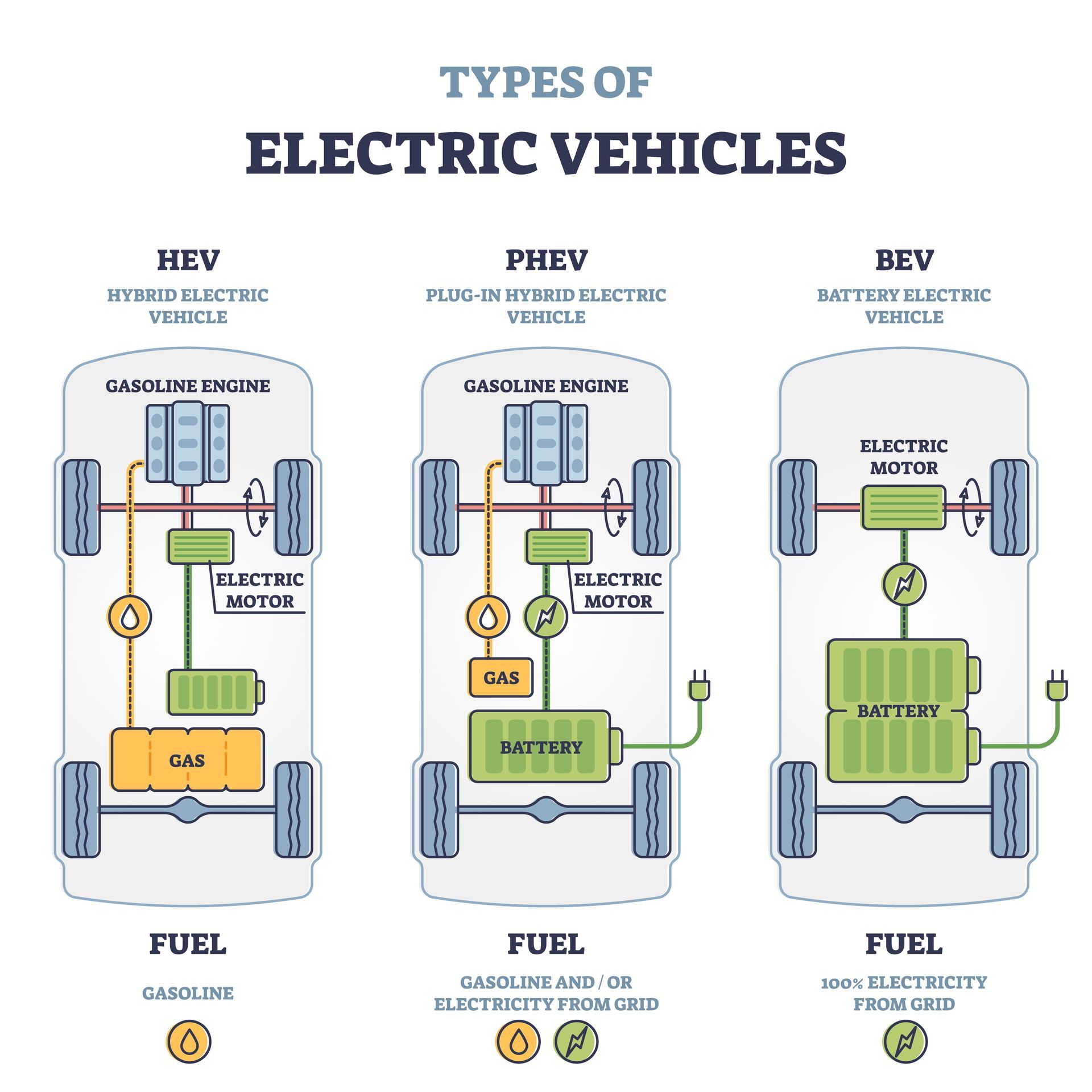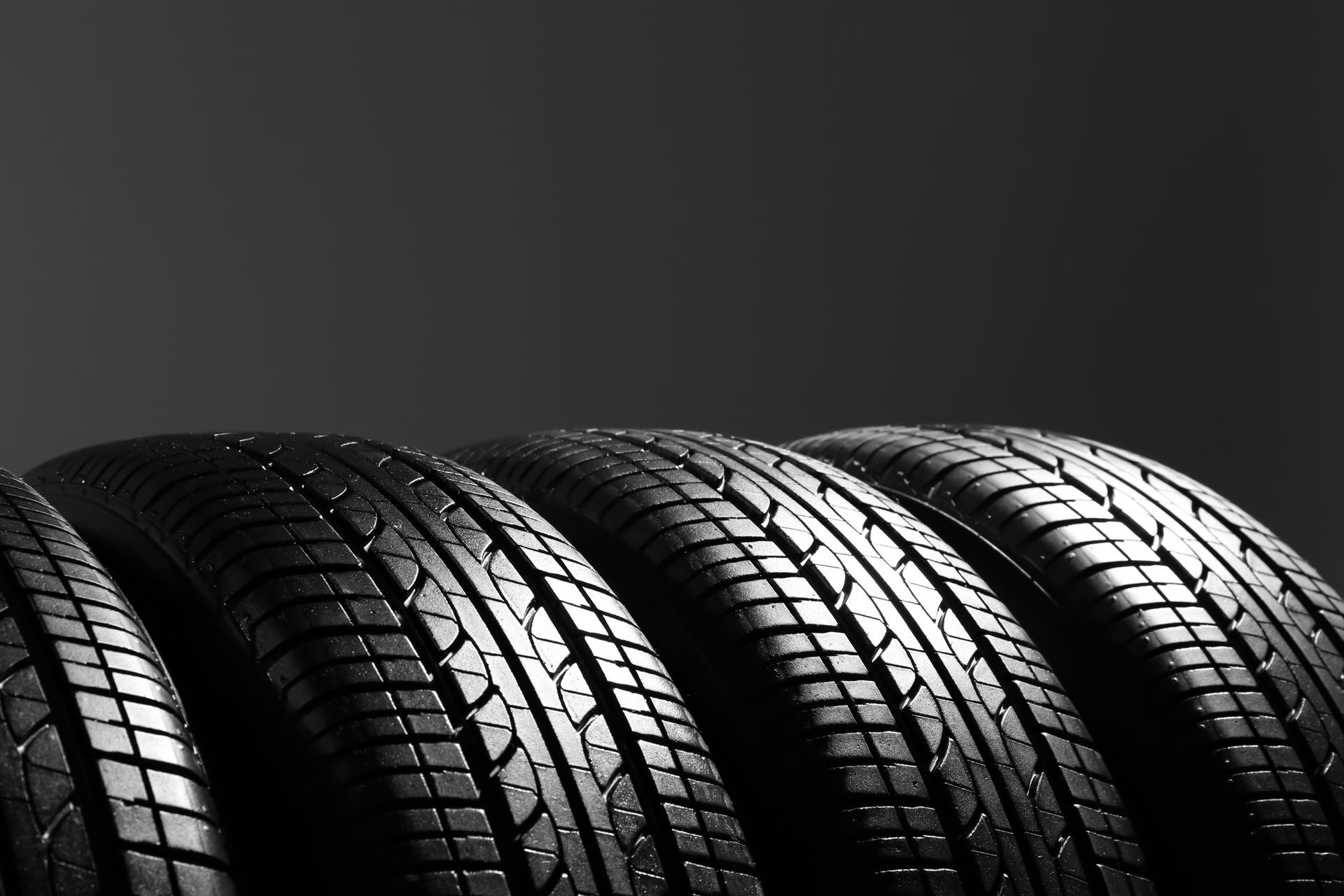Loading ...
Missing business hours data / Error occurred while getting the data.
24 hour service, After hours towing
Loading ...
Missing business hours data / Error occurred while getting the data.
24 hour service, After hours towing
Make Your Car Last Longer 101 Car Maintenance Tips
July 7, 2023
Benefits Of Maintaining Your Car
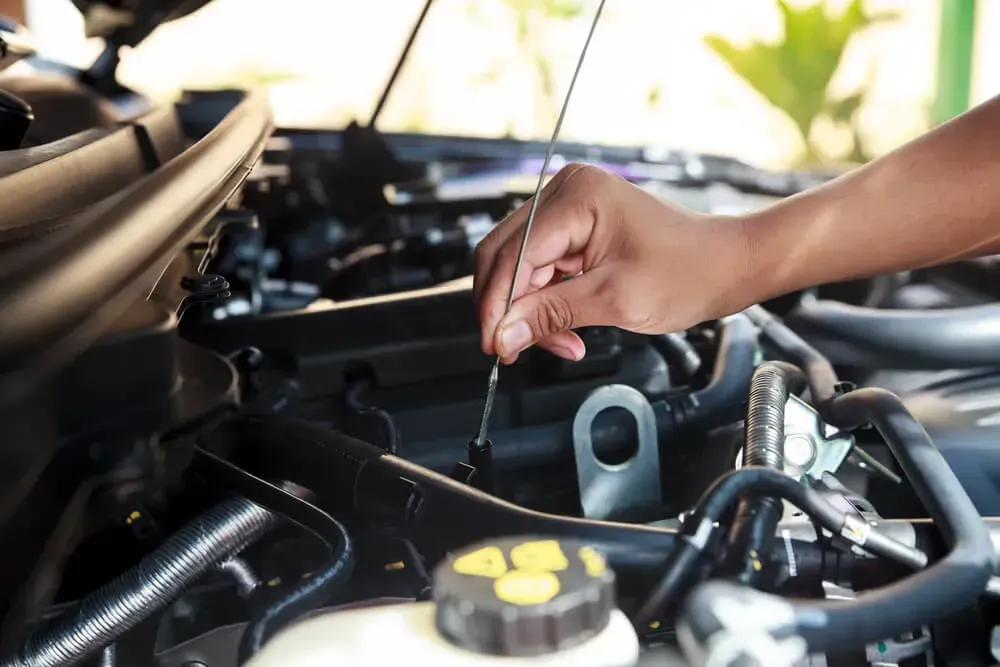
Longevity
You’ve probably seen a car that is older than Dracula but surprisingly, it doesn’t look like it. In fact, a well-maintained old car can outlive a newer car that’s been neglected without proper care. Quite often, it’s the little things like regularly checking your tire pressure, brakes, fluid level, battery and lights that make the big difference in the long run.
Boost Your Safety
Did you know that some road accidents are indirectly caused by poor car maintenance? For instance, you can forget to service your brake system and when you need to slow down, it malfunctions causing an accident. Another scenario would be a worn out tire that was supposed to be changed that bursts when you’re driving at high speed – you get the picture?
Anyway, maintaining your car can improve your safety and potentially save your life.
Enhances Reliability And Performance
If you drive a car for long enough without maintenance, you start to notice a decline in the performance. It could be that it doesn’t accelerate fast like it did when it was fresh out of the dealership. Maybe the fuel economy worsened or it coughs when you start it. No, a wizard didn’t put a spell on your car but it is normal for car components to wear out if they aren’t serviced or replaced on a regular basis.
Increases The Resale Value Of Your Vehicle
Ever wondered why some classic cars are auctioned at a higher resale value decades later after they were purchased? This is usually quite common among rare limited car models that are out of the market but the owners kept them in mint condition. However, even if your vehicle is not one of those scarce types, ensuring that it is well-maintained will increase its resale value.
Saves You Expensive Repair Costs
Sometimes, the repair cost of a vehicle can be too expensive to the point that you spend more money trying to fix your car than you would if you bought a new car of the same exact model. Nonetheless, you can avoid digging a hole in your pocket by scheduling regular maintenance check-ups to seal that crack before it brings down the wall. Catch the drift? Remember, prevention is better than cure!
Minimizes Roadside Emergencies
It can be annoying when your car engine won’t start on a cold winter morning or it suddenly breaks down on the roadside due to overheating problems. It’s even more frustrating when you’re stuck in the middle of nowhere with no strong network signal and you have no choice but to abandon your vehicle to go seek help. Whoa! You don’t want to imagine that; it reads like a script from a horror movie.
Onto serious matters, you can minimize the risk of roadside emergencies if you take good care of your vehicle.
Protects The Environment
Even if you have no passion for a cleaner environment, most countries have implemented regulations to limit vehicle exhaust emissions. Nowadays, it’s not just car manufacturers who have a duty to reduce vehicle emissions but even car owners have a responsibility to keep off cars that are road unworthy due to excess carbon emissions. What better way to keep your vehicle in compliance with environmental protection standards than properly maintaining it.
101 Car Maintenance Tips
2 Basic Prerequisites
1. Read The Owner’s Manual
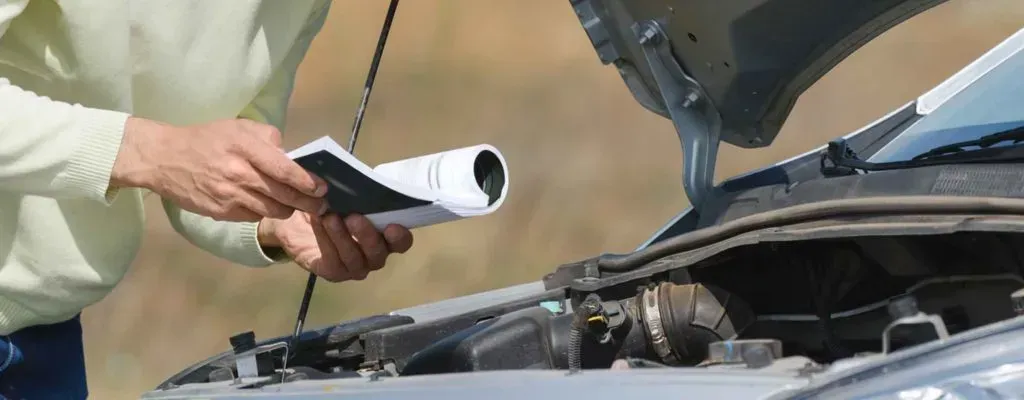
When it comes to vehicles, there is no ‘one size fits all’ prescription. For example, the oil change schedule of your car depends on the type of car that you drive. Contrary to the common misconception, you don’t need to change the oil after every 3,000 miles.
Hence, before everything else, make sure you read the owner’s manual to double check what your vehicle needs during maintenance. If you don’t, you will probably end up putting the wrong oil into your vehicle’s engine and cause serious damage.
2. Learn The Meaning Of Different Warning Light Indicators
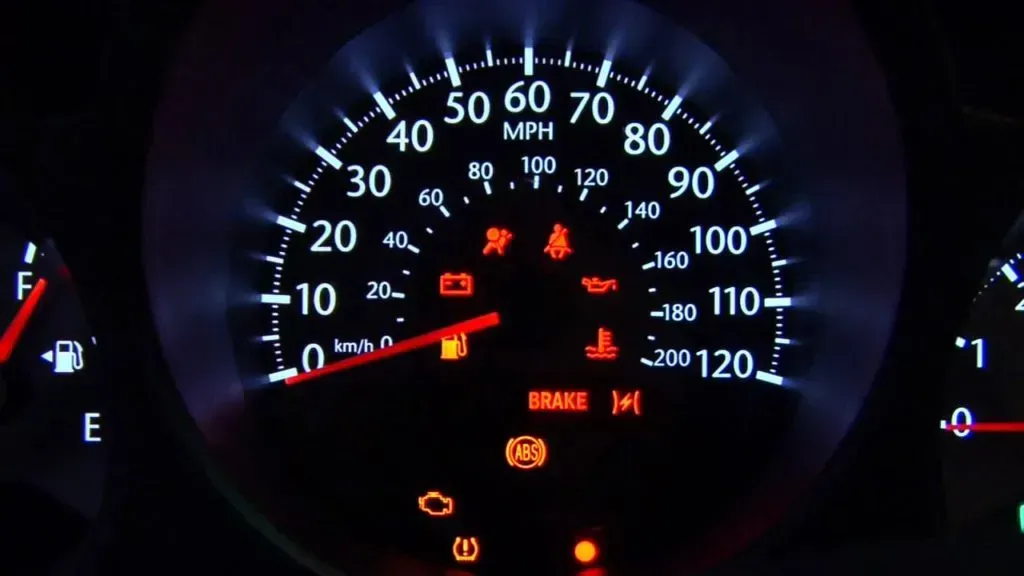
Most modern cars will notify you via warning lights whenever there are some issues that require immediate attention. However, those warning lights will be useless if you can’t interpret what they mean to choose the appropriate course of action. Here’s how it goes:
Service engine light – You see that little print on your dashboard written “service engine”, “service” or “maint reqd”? When you see that indicator light, it’s a reminder that the recommended maintenance schedule is due.
Check engine light – Otherwise known as the malfunction indicator lamp, it will tell you whenever the sensors in your engine detect a problem that ought to be fixed. Usually, it doesn’t specify the exact issue but you can consult a mechanic or use OBD2 scanner to find out the root cause of the problem.
Brake warning light- If the brake warning light indicator automaticallyturns on, it could mean your brake fluid level is low or the brake pads are worn out. The brake warning light can also activate when you’ve engaged the parking brakes. But just to be sure, you can refer to the owner’s manual.
Coolant warning light- Don’t wait for a whistle! In case you see the coolant warning light, you should pull over immediately, open the hood and wait for the car to cool down. The coolant light tells you that the engine internal temperature is beyond the limit and if you keep driving you may damage it. Don’t forget: never open the radiator cap when the engine is hot!
ABS Warning light – Just like thebrake warning light, if the ABS warning light flashes, it’s a sign that there could be a problem with the anti-lock braking system. In other words, it could be harder for you to suddenly stop your vehicle in an emergency situation. Otherwise, if both your ABS and brake warning lights are on, you shouldn’t risk driving your vehicle until the problem is fixed.
Oil Warning light – Once the oil in your engine is lowerthan recommended, the oil warning light will engage. It could also be a symptom of a bigger problem like oil filter blockage or oil pump malfunction. Mind you, driving your car when the warning light is on can completely wreak havoc to the engine.
Electrical fault light – Obviously, it means there is an issue with the electrical charging system. You can run a diagnostic to dig deeper into the cause. In most cases, it’s usually the alternator that is misbehaving.
How To Break In A New Car
Vehicles are made out of parts that need to synchronize after getting assembled in order to achieve optimum performance. Believe it or not, the longevity of your vehicle will depend on how you treat it when it is new. That’s why car manufacturers have the ‘break-in period’ where they recommend certain precautions, driving techniques and maintenance assignments to improve the performance and prolong the lifespan of your vehicle.
Of course, it’s important to consult your owner’s manual for the specific break-in period instructions. The typical break-in period for most modern cars is around 500 miles.
Before hitting that target, the most common break-in period recommendations include:
3. Administer The First Oil Change After 50 To 100 Miles
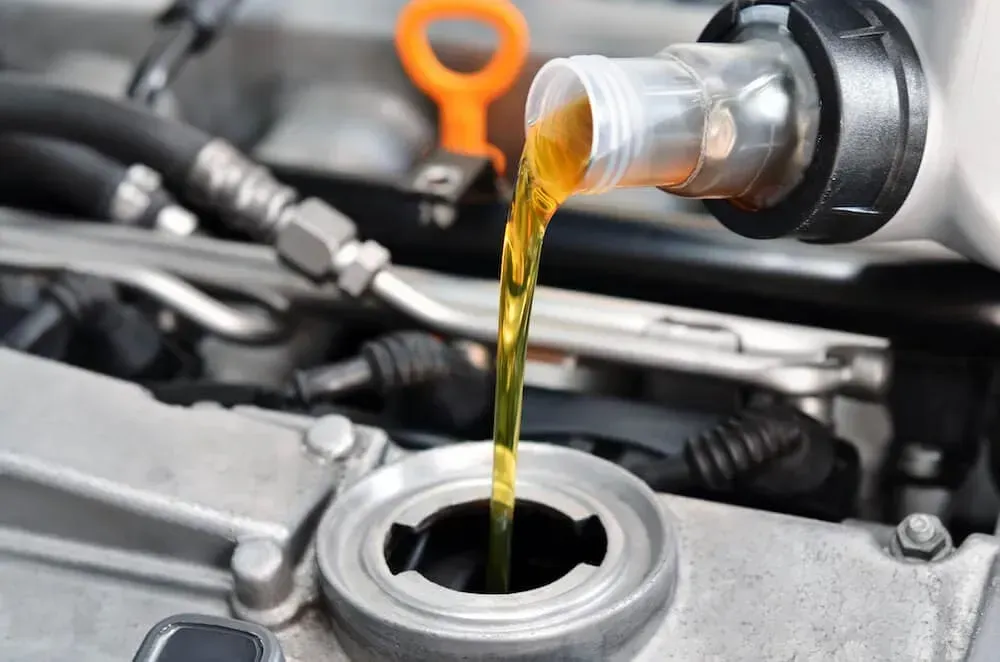
Sure, when the vehicle has been on the road for a long time, you can even change the oil after 5,000 miles. However, when a car is brand new straight out of the factory, you should change the oil after 50 or 100 miles. Later, you can change the oil after the recommended break-in period mileage.
4. Keep Revs Under The 3,000 Rpm Mark
Do you know why you should keep the revs under the 3,000 rpm mark? Because the piston rings need to interlock with the cylinder bores tightly. Keep in mind that the piston rings are necessary to prevent oil leakage and if you rev the engine too much, you can disrupt the whole process.
5. Drive At Speeds Of 30 Mph And 50 Mph
Since most people are tempted to test the high speed and acceleration of their new automobile, this sure does seem like something most drivers would forget. However, it may pay off eventually if you don’t exceed the suggested run-in period speed limit. For convenience, you can opt to drive around urban areas where you can keep it between 30 mph and 50 mph.
Tires & Wheels Care And Maintenance
A slight imbalance on the tires and wheels can cause your vehicle to overturn at high speed especially when making turns. You don’t want that to happen! If you want to drive safely, then you must prioritize your tires and wheels through the following steps;
6. Check Tire Pressures
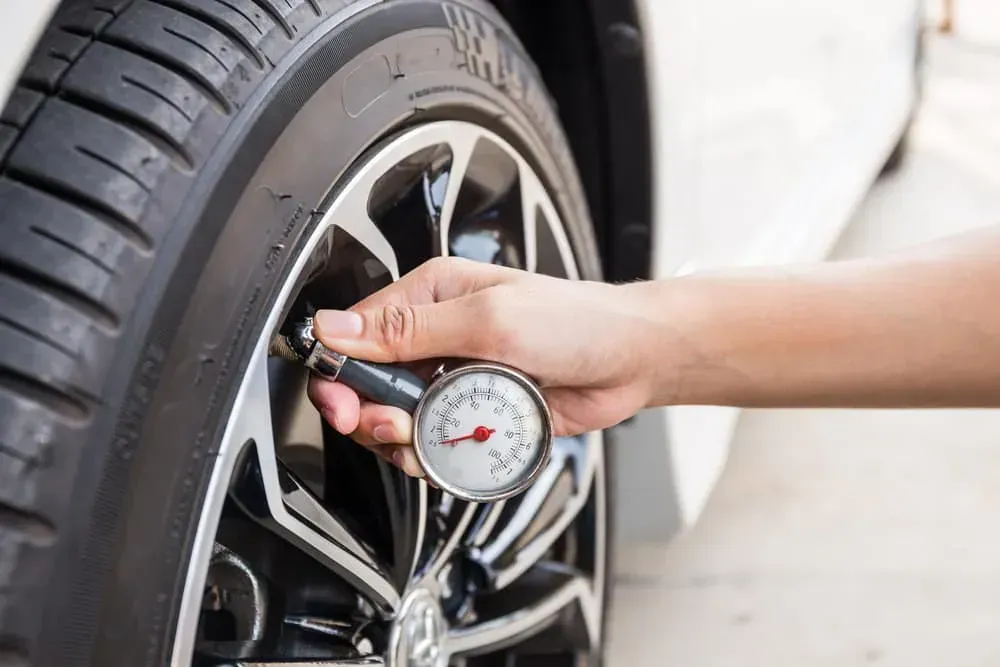
Did you know that most tire-related accidents are caused by under-inflated tires? Not only does it diminish the gas mileage and handling, but an under-inflated tire can trigger a dangerous blowout. Don’t wait for the mechanic to check your tire pressure once in a blue moon but you should do it yourself every month. As per the norm, the owner’s manual will tell you the appropriate pressure for your tires.
Don’t forget, over-inflated tires can be a problem too.
7. Check Tread Depth
A slight imbalance on the tires and wheels can cause your vehicle to overturn at high speed especially when making turns. You don’t want that to happen! If you want to drive safely, then you must prioritize your tires and wheels through the following steps;
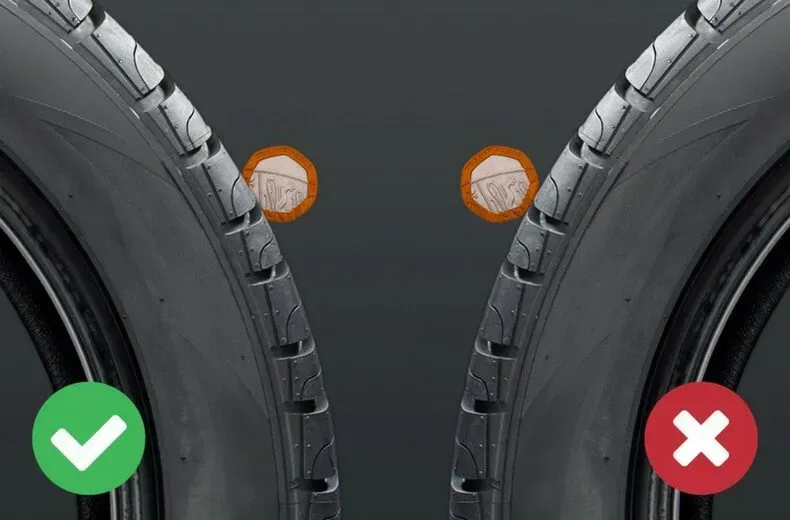
Do you see those imprinted patterns on the tires that leave marks on the ground when you drive on dry soil or mud? They’re known as tire treads and they play a big role whenever you want to drive in all weather conditions. Suffice to say, always make sure you check the depth of the tread before you drive that car.
8. Inspect Tires Regularly
Unlike that short trip to the mall, the tires are more strained during a long road trip. A small crack, bulge or stuck object on the tire can cause a lot of trouble when you travel halfway across the state or country. Just pray that stuck glass on your tire doesn’t set off a deflated tire on the highway. Well, you don’t have to leave your safety to chance but you can always inspect your tires regularly.
9. Rotate Tires And Have The Alignment Checked
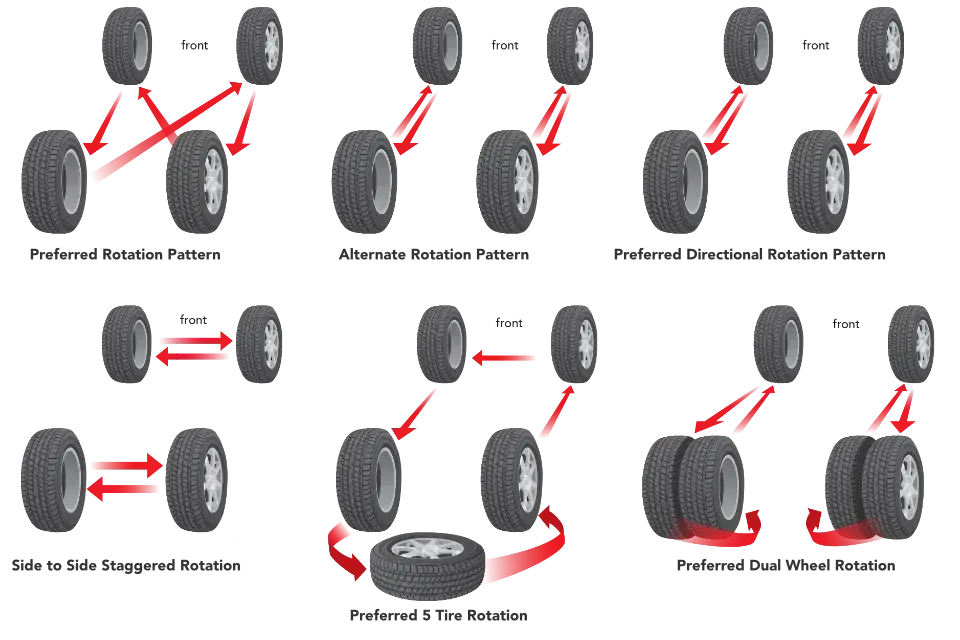
Make sure you check the owner’s manual to know when you should rotate and align your tires. Most manuals suggest tire rotation and alignment after 5,000 to 8,000 miles. The perks? It keeps your fuel economy in check. Also, the procedure is fairly cheap.
10. Don’t Overload Your Vehicle
One of the worst mistakes you can do is to overload your vehicle. If it doesn’t cause a vehicle imbalance, it will trigger a tire breakdown. To check how much weight your vehicle can support, refer to the owner’s manual or the placard on the door frame.
11. Replace Worn Out Tires Immediately
There is a way to check the state of the tire using a penny. It’s simple; just take a penny out of your pocket, invert the coin and make sure Lincoln’s head is facing upside down. Next, put the penny in between the tire treads and observe. If you can see the top of Lincoln’s head when you put the penny between the tire treads, it means you need new tires. On the other hand, if you can’t see the top of Lincoln’s head when you put the penny between the tire treads, you’re good to go.
Otherwise, you know what happens when your tires completely wear out. Hint; a ticking time bomb!
12. Don’t Install Mismatched Tires
Admit it, you’ve probably thought about fixing mismatched tires on your car, or maybe it was your subconscious mind. The problem with installing mismatched tires is that it can upset the handling of your car and even trigger a spin out. In fact, a misfit tire can cause the other tires to wear out at an unusual alarming high rate and force you to buy a new set of tires a few weeks later.
13. Check Your Spare Tire
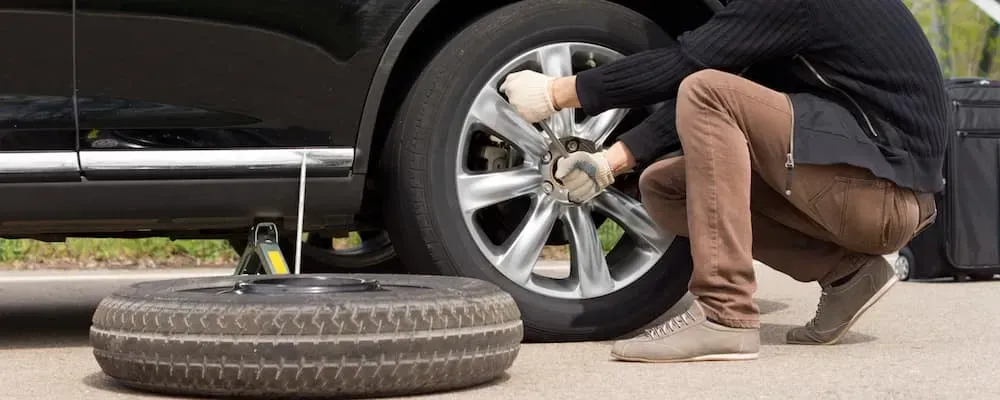
Just because you’re certain there is a spare tire in your trunk, doesn’t mean it will be useful when push comes to shove. Do you check its air pressure once in a while? Have you confirmed it won’t mismatch when you install it? The last thing you want is wasting money on a tow truck because you forgot the check the condition of your spare tire.
Car Engine Maintenance Tips
The engine is the heart of your car. It often goes without saying that if you want to keep the performance of your car at the optimum capacity, you must maintain the engine properly. Not to mention, a single mistake in the engine can cause a lot of damage and you will probably end up spending almost the same amount of money required to buy a new vehicle.
So what should you do to keep your engine in mint condition?
14. Check The Oil Regularly
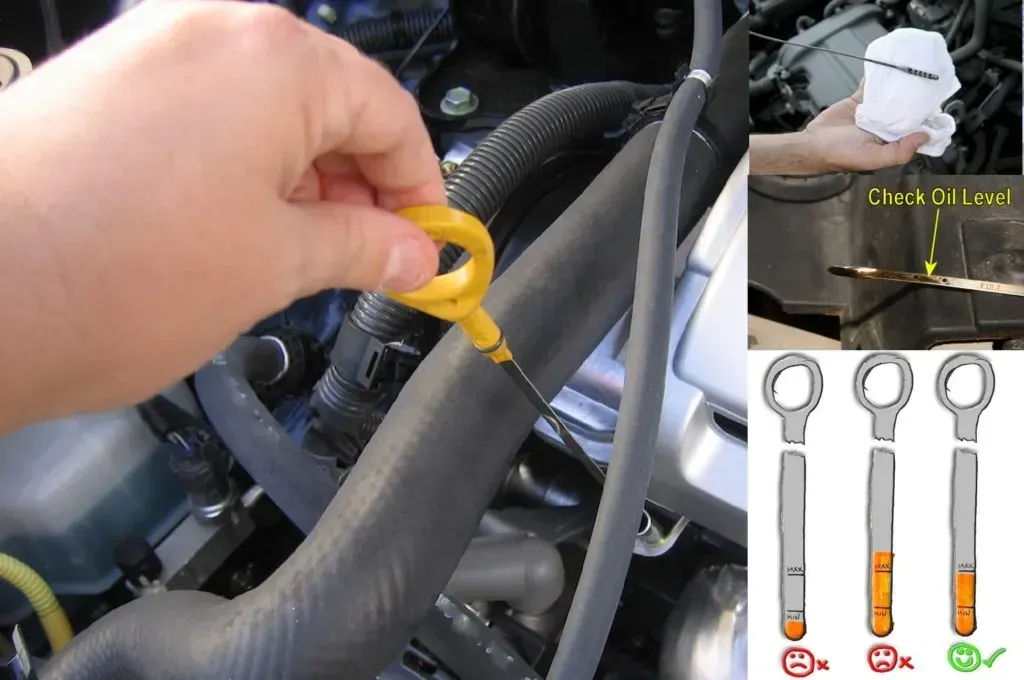
If the engine is the heart of your car, the oil is the blood pumping in the veins that keeps it going. In other words, the oil is crucial for lubrication which helps to reduce friction. Further, the lower the friction, the less the chances of mechanical wear and tear.
Make sure you check the owner’s manual to verify how often you should change the oil. If you’re unsure, you can check the oil level of your engine using a dipstick. Another thing; if you notice the oil on the dipstick looks dirty, you should replace it.
15. Keep Your Engine From Overheating
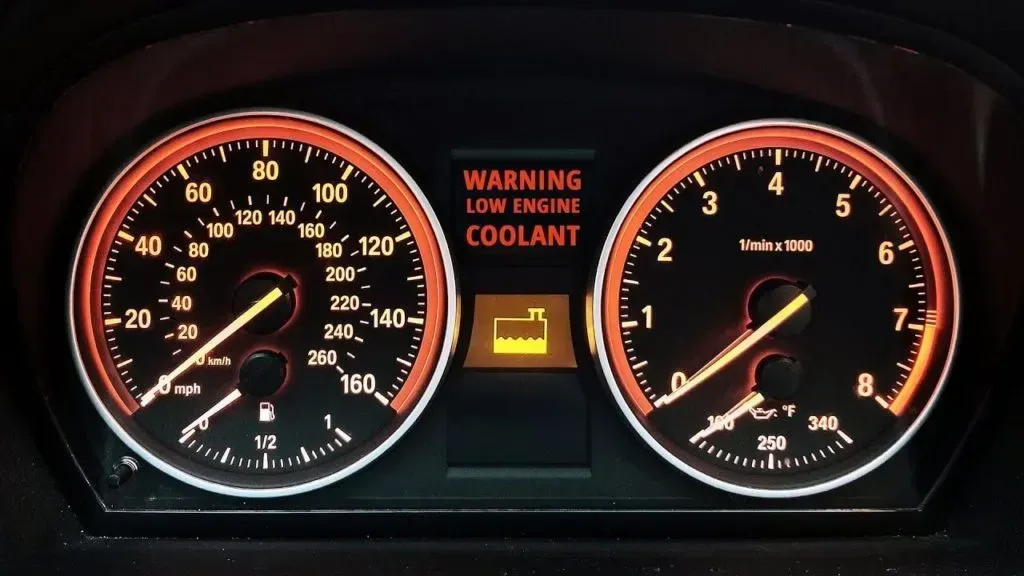
Now that you know when the coolant light is on, it means the engine is overheating, you should know how to prevent it. But how do you do that? Well, it’s not rocket science, just check the coolant level occasionally. If you didn’t get the memo, the coolant plays a crucial role in regulating the engine temperature. Also, check out for any symptoms of a coolant leak.
16. Schedule A Regular Tune Up

New PA tune up might be necessary when your car power slows down or it becomes sluggish. Typically, it involves replacing or cleaning the air filter, PCV valves, spark plugs, fuel injection system, throttle body, fuel filter, distributor system, and ignition wires. What needs to be changed or replaced depends on the type of car that you drive. Additionally, the
tune-up maintenance is usually scheduled after hitting 60,000 to 90,000 miles.
17. Check The Timing Belt
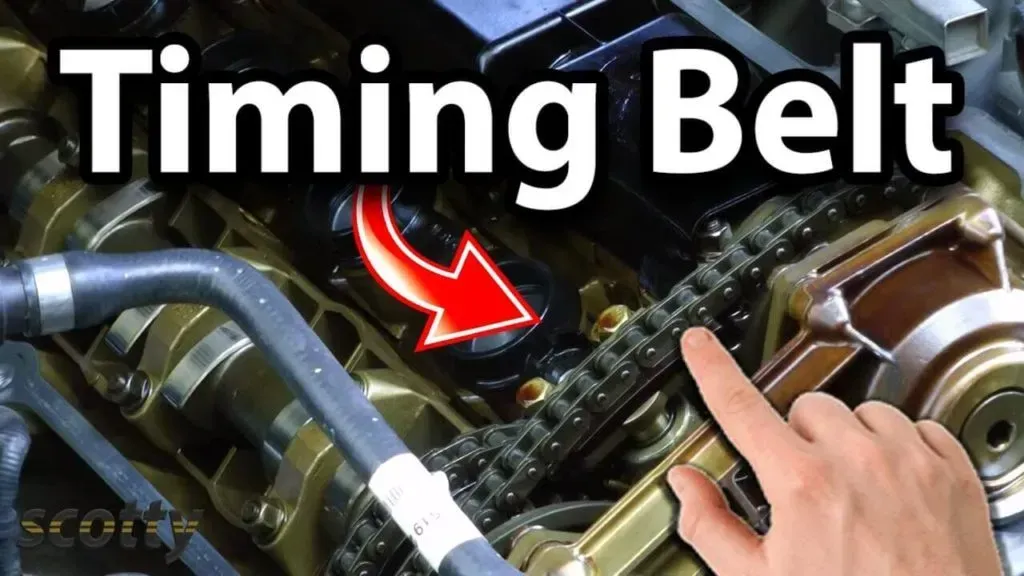
The timing belt is one of the most important parts of an engine; it works by coordinating the movement of the valves and pistons. Moreover, a damaged timing belt can completely destroy your engine burning a hole in your pocket. Then again, checking the timing belt will only take a few minutes and save you a lot of trouble in the future. Watch out for the red flags of a bad timing belt such as ticking engine noise, misfiring engine or oil leakage.
Otherwise, you should replace the timing belt as recommended in the owner’s manual; mostly, the
change interval is from 60,000 to 105,000 miles.
18. Change The Air Filter At Regular Intervals

The air filter helps to circulate air in your engine to improve power and performance. Other than that, it stops debris and dust from accumulating in your engine. Hence, changing your air filter regularly especially if you drive on dusty roads can prevent a choked up engine. Of course, you should confirm with your car manufacturer how often you should change the air filter but just for the record, it can be replaced after 15,000 to 20,000 miles.
19. Replace Worn Out Drive Belts
Just like the timing belts, a drive belt malfunction can paralyze your engine. The most common sign of a faulty drive belt is a squeaky noise coming out of the engine. If it does happen, consult a technician immediately. However, you can avoid a worst-case scenario by checking the drive belts whenever you’re servicing your vehicle and replacing it if you notice any signs of wearing out.
20. Change The Spark Plugs And Wires
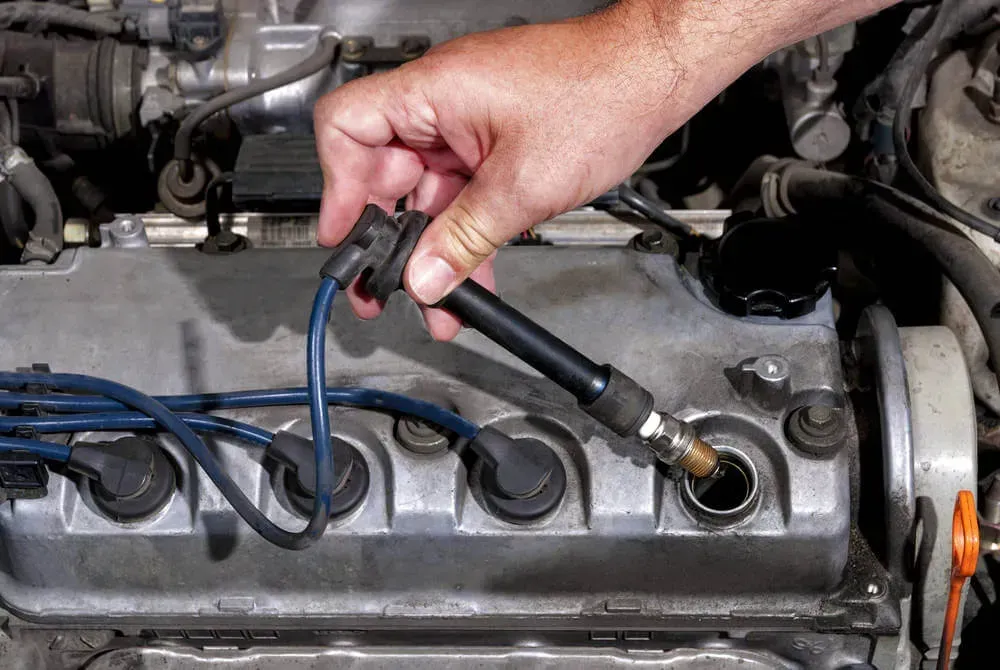
The spark plugs of your car assist to improve engine performance and avert those cold-starting and misfiring problems. Most owners’ manual advice
replacing the spark plugs after 30,000 miles.
Don’t worry; it won’t cost you a lot of time and money. Needless to say, when you change spark plugs, you should also change the wires to match up the electrical current of the new plugs.
21. Replace The Fuel Filter

The fuel filter sieves unwanted contaminants when the fuel is processed through the engine. Unfortunately, the fuel filter can get overwhelmed after a period of constant functioning. Be sure to read your manual to know after how long you should replace the filter – every type of car is different.
Brake Maintenance
Most people don’t appreciate the importance of a well-maintained braking system until winter when the road gets treacherous and slippery. That one-second delay could be the difference between life and death. In a nutshell, let’s find out how you can keep your brakes at the top of their game.
22. Check Brake Pads And Rotors
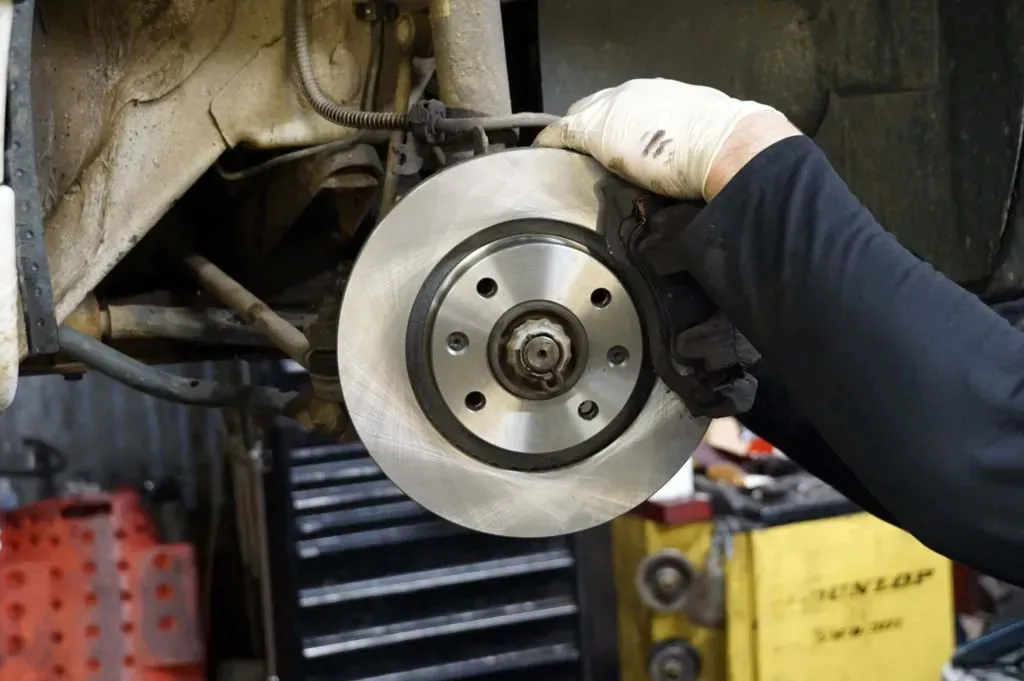
When you hit the brakes, it’s the brake pads and rotors that initiate the point of contacts to quickly stop the tires from moving. Since brake pads and rotors are directly in contact with the tires at full speed, it is evident that they’re very likely to get worn out due to the intense friction. Therefore, it is only logical to remove the tires and inspect the brake pads and rotors for any signs of attrition.
Additionally, if you notice it takes longer than usual to stop or you detect a burning odor whenever you hit the brakes, it may be time to change the brake pads and raptors.
23. Flush Your Brake Fluid
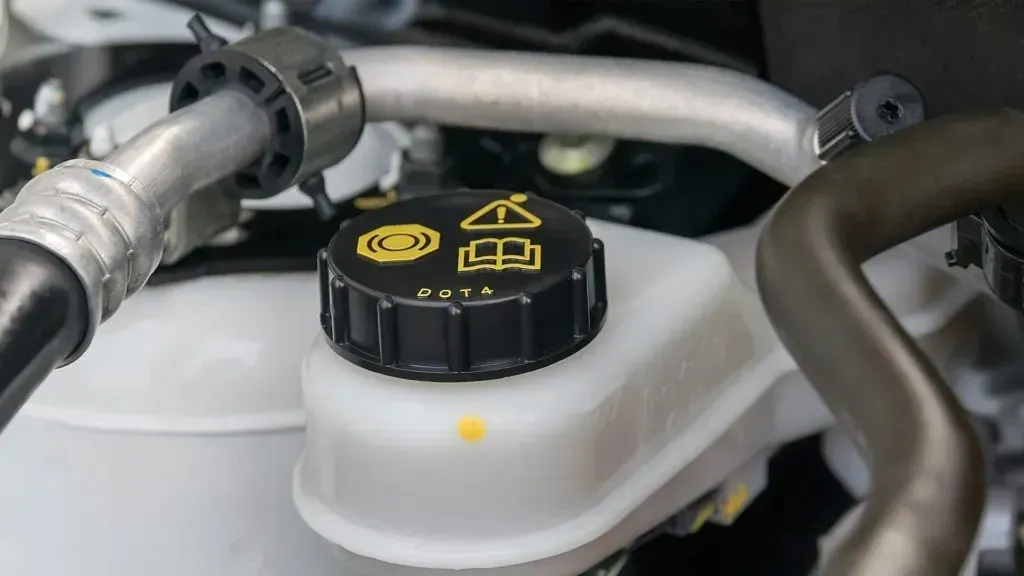
The brake fluid is used to transfer pressure from the brake pedals to the brake pads and rotors. Due to the fact that brake fluid is liquid, it baits moisture which is a catalyst for corrosion. Besides, the moisture can accumulate and drastically affect the performance of the brakes. If you check the brake fluid and notice a cloudy or milky mixture, it ought to be flushed out.
Most car manufacturers recommend
the brake fluid to be replaced after every 25,000 miles.
24. Bleed The Brake Lines
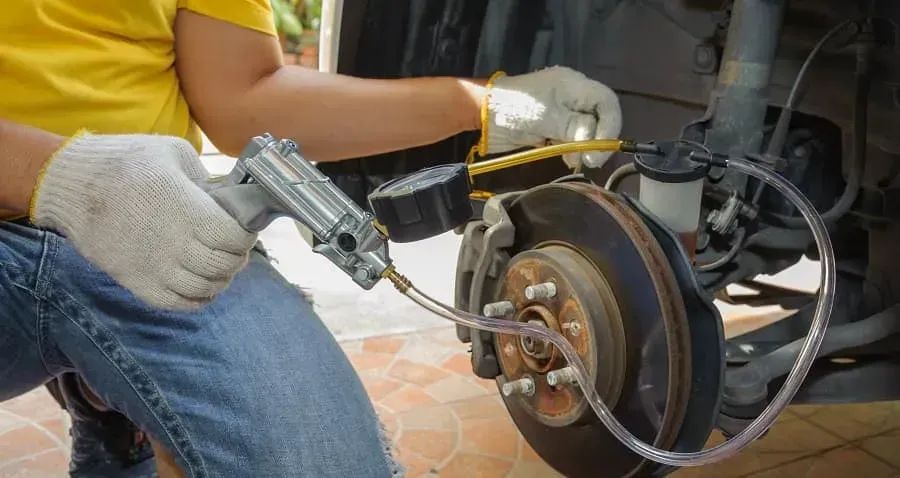
Sometimes excess air can get stuck between the brake lines causing the braking system to deteriorate. As per the norm, you should bleed the brakes after flushing and replacing the brake fluid. However, bleeding the brake lines can be a very delicate process and it would be wise to seek the help of a technician during a brake inspection service. Typically, you can bleed the brakes after 2 or 3 years.
25. Replace Or Upgrade Brake Parts
It is possible to upgrade the brake parts if you feel like your vehicle should do better. For instance, you can upgrade to slotted disc brakes if you’re searching for something that is very effective when it comes to heat resistance. On the other hand, you could also switch to ceramic pads if you want to keep it quiet and reduce brake dust.
Maintain Your Car’s Electrical System
The car battery can go ignored for days until one chilly morning when you try to start your car and it does nothing but ‘click’. Want to make sure that never happens? Here’s how you go about it:
26. Drive Your Vehicle Regularly
It’s common sense but sometimes people forget that driving a car regularly keeps the battery charged. Even so, if you leave your car stagnant at the parking lot for weeks without any action, your battery may fail when you need it. For that reason, if you won’t be driving your vehicle for a few weeks, make sure you start it at least once or twice a week and leave the engine running for 20 to 30 minutes to power the battery.
Otherwise, if you’re traveling and there is nobody around to help you out, you can disconnect the battery before you leave.
27. Don’t Leave Car Electricals On Without Engine Running
If the engine is not running, don’t leave electrical car accessories like the lights or the radio turned on for a long period. Doing so will only suck the battery charge and probably leave you stranded. Like that scene of Walter White and Jesse Pinkman (Breaking Bad) in the middle of the desert without not enough food or water. Another thing; don’t leave the car key in the ignition or else you will kill your battery in a few hours.
28. Keep The Battery Case Clean
Apparently, excess dirt and moisture can spoil your battery to the extent of disrupting the charge. In fact, it can even cause corrosion or acid leak on the battery terminals. There is no excuse for this since it should only take you less than 30 minutes to clean the battery with water and apply grease to keep off the dirt and dampness.
29. Properly Secure The Battery In The Engine Bay
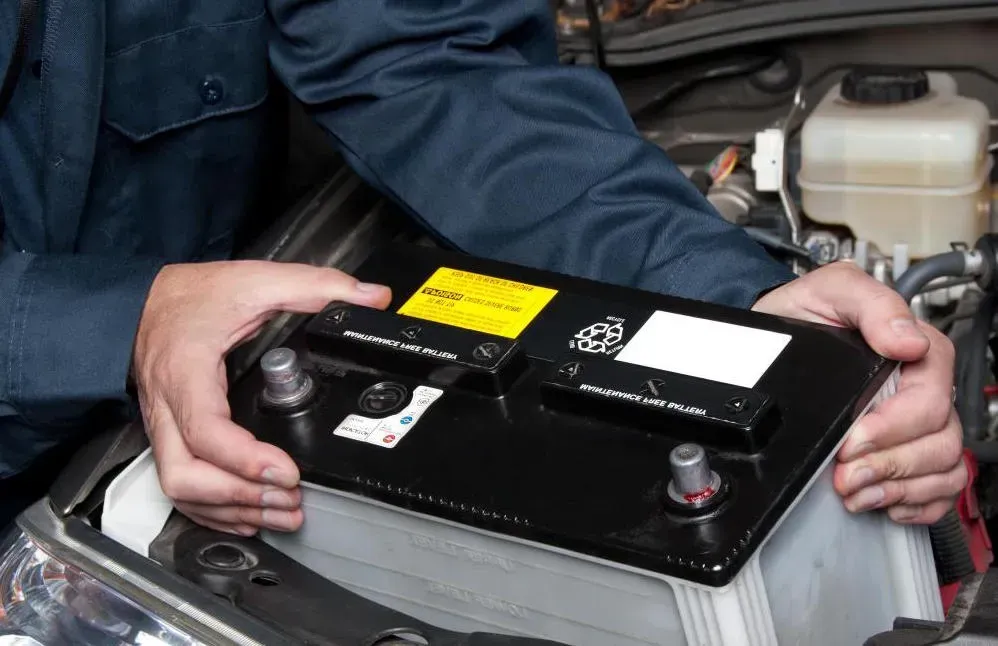
The car battery is a very fragile part of the engine; if you don’t secure it, the engine vibration can disorient the battery plates. Moreover, the vibrations can also damage the terminals prompting the car to stop. All that trouble can be avoided just by locking the battery in the engine bay.
30. Don’t Jump-Start A Flat Battery
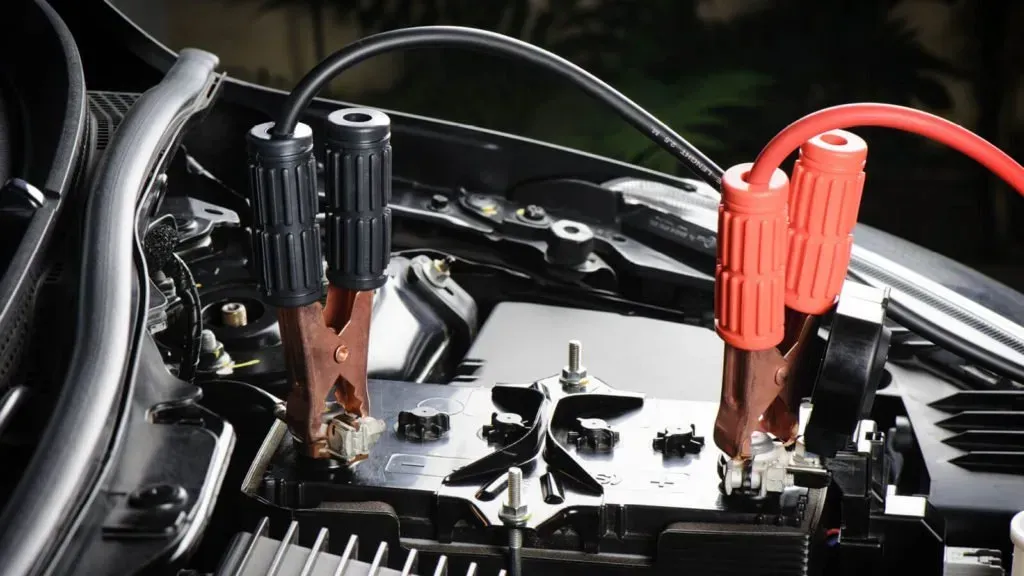
Admittedly, most drivers break this rule. Now, don’t get it wrong; it doesn’t mean that you shouldn’t seek help from a friend when your battery is dead but sometimes a flat battery can get overwhelmed with excessive current enough to spoil the electronics. If you must do it, leave your headlights on to absorb any excess electrical current. Most importantly, read the user’s manual to know how it should be done on your car.
31. Park Inside A Garage In Winter
Do you know that car batteries discharge faster during winter? It’s even worse when there is water that freezes when you leave your car exposed in extremely cold weather. The most effective method of protecting your car battery during winter is to park it inside an insulated garage. Also, don’t forget to charge the battery before you park the car.
32. Cut Down On Short Trips
Okay, you know that driving your vehicle regularly helps to charge your battery, but you would be doing yourself a disservice if you take short trips. If you really want to make it worth it, go out on a long trip, especially after jump starting and resurrecting your dead battery.
33. Change The Battery After 3 Or 4 Years
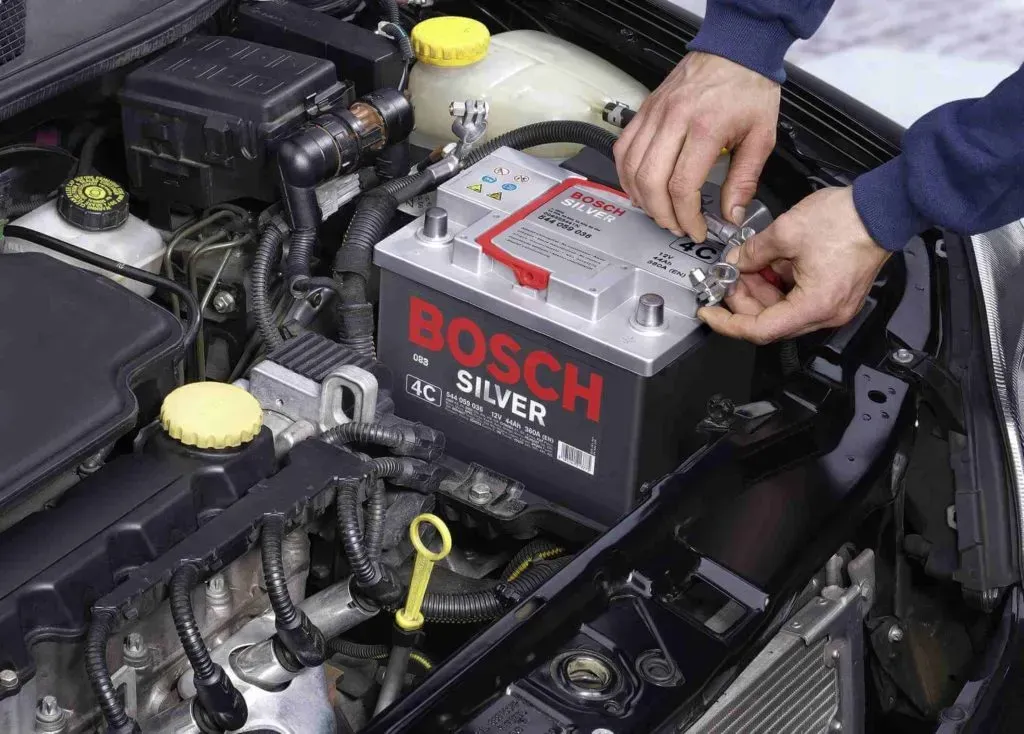
Don’t wait until the battery case is swollen to replace your battery. Naturally, all car batteries dwindle with time and eventually die. Either way, most car batteries should be scheduled for a replacement after 3 to 4 years. However, the average battery lifespan is dictated by the weather, driving habits and charge capacity.
Take Care Of The Car’s Lighting System
Having the best headlights doesn’t mean you should get one of those super-bright headlights with the power of 10 suns blinding everyone on the road. As long as your headlights help you to see at night or during foggy weather without the blinding effect, you can drive peacefully without getting cursed by other drivers. Regardless, you need to take proper care of your lights to keep up the standards. So how do you do it?
34. Clean Them Regularly

It’s quite common for dirt and dust to pile up on your headlights and negatively affecting the visibility. Unlike dirt on the windshield which is immediately noticed, most folks can drive for miles with no idea the low illumination is due to building up dirt. In fact, you should clean your headlights with a damp microfiber towel every week.
35. Address Clouding And Yellowing
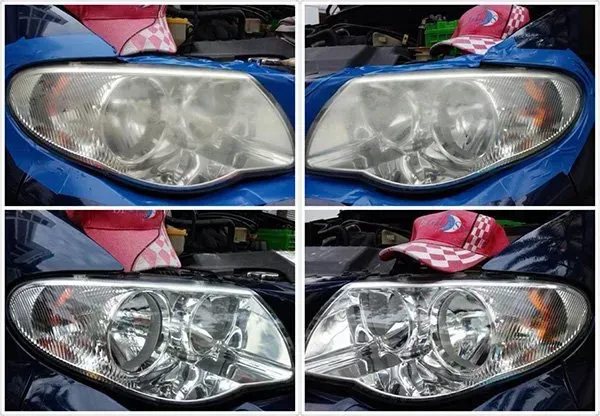
One sure way potential buyers judge a used car to determine if the price is worth it is by looking at the headlights. If the headlights are cloudy or yellowed, people assume your vehicle is as old as the dinosaurs and throw it in the ‘meh’ category. But you can restore those headlights to default settings using headlight restoration systems. If it doesn’t work out, there is always the option of replacing it.
36. Check Illumination
Occasionally, one headlight can dim or it completely malfunctions leaving its twin sibling working just fine. The end result is a reduced illumination that interferes with visibility. Sure, some people would notice it immediately but it’s possible not to tell when you’re behind the wheel.
In case you’ve noticed something is a bit off, park your car, get out and check the illumination. Alternatively, you can park in front of an obstacle and switch both headlights on and off to evaluate the status.
37. Check Alignment
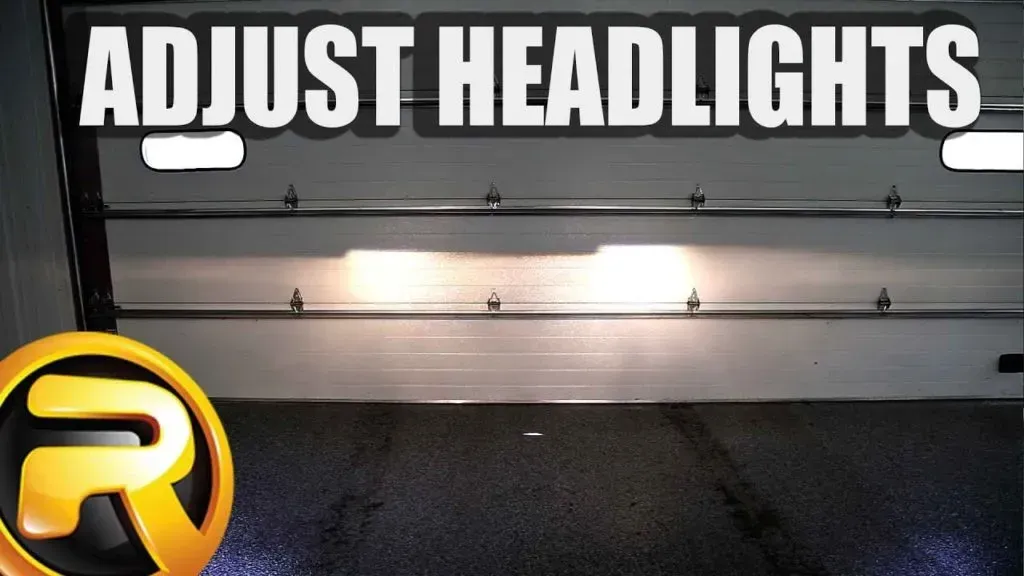
t’s not just tires that can get misaligned but headlights too. Quite often, misaligned headlights are triggered by accidents or driving through rough terrains over a long period. Again, you would have to park the car in front of an obstacle like a wall or a garage door to confirm if the headlights are aligned. If you observe any issue (even a slight misalignment), consult a mechanic.
38. Replace Bulbs In Pairs
When you’re seeking to replace one faulty headlight, it is better to buy both bulbs in pairs. Why? It’s common for a new headlight to be brighter than an older headlight. However, if you buy both bulbs in pairs, the brightness intensity will be the same. Not to mention, the remaining light bulbs could be on their deathbed even if they’re working just fine.
Oil And Fluids
You don’t need to pay a mechanic to inspect your fluid level. It’s convenient and cheaper to do it yourself. Moreover, oil isn’t the only fluid that can improve your vehicle performance but the other type of car fluids that you should check include:
39. Radiator Fluid
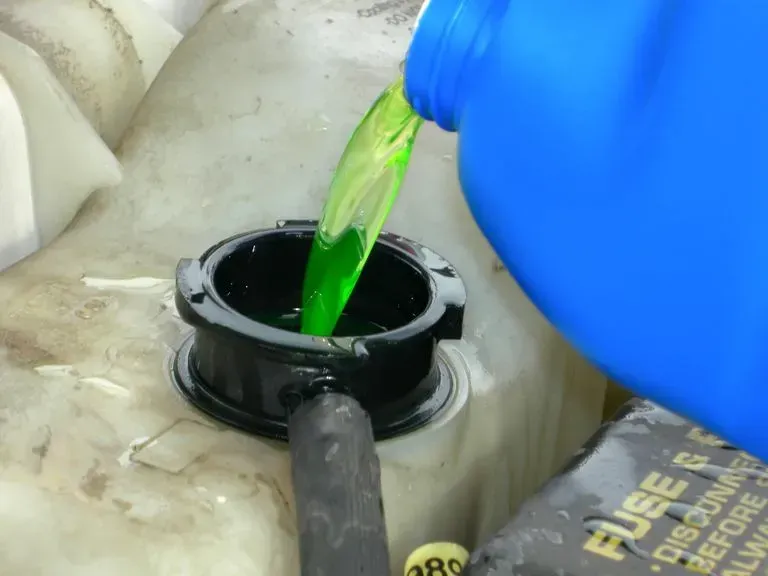
If the radiator fluid is low, it’s just a matter of time before your vehicle overheats and breaks down. To check the radiator fluid, you must open the radiator cap; which is usually labeled and situated on the front or side of the engine. After you’ve opened the radiator cap, observe the coolant level.
Most vehicles have a coolant antifreeze reservoir connected to the radiator cap that tells you the current radiator fluid level. Warning: Don’t try to unlock the radiator cap when the engine is hot.
40. Transmission Fluid
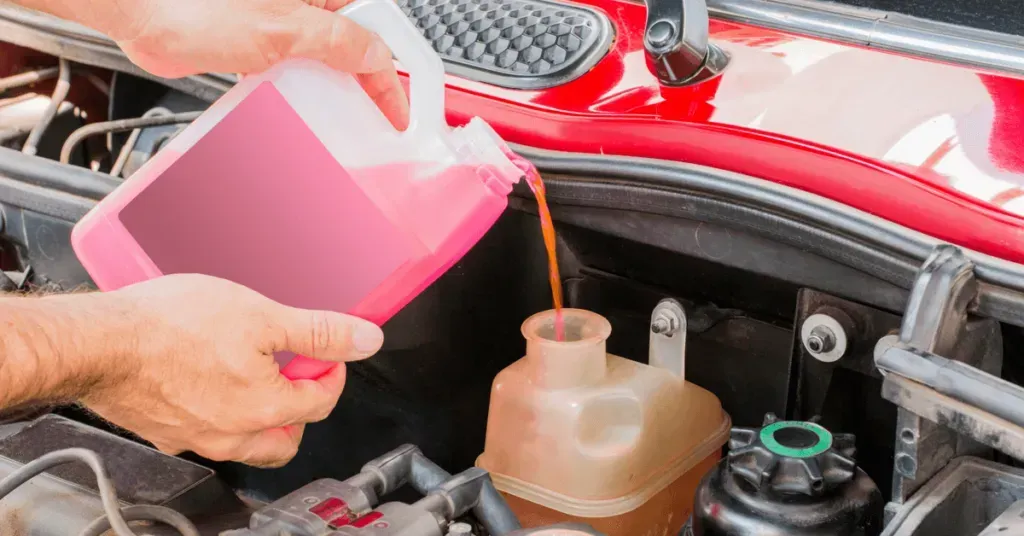
As the name suggests, the transmission fluid job is to lubricate the transmission and ease the friction. Do you see the other dipstick that isn’t for the oil? That’s what you should use to check the transmission fluid. The process is similar to checking the oil but you put the dipstick in the transmission fluid tank.
On the other hand, if you touch the transmission fluid and notice there are particles or you get a whiff of burnt smell, it means you should change it.
41. Power Steering Fluid
If the power steering fluid is low, it becomes harder to control the steering wheel. If you didn’t know the power steering wheel is perhaps the easiest fluid to check; most engines come with a transparent reservoir and you can check the fluid level without opening it. The container will likely be labeled ‘steering’ – if you don’t see it, you can check on the car’s manual.
42. Brake Fluid
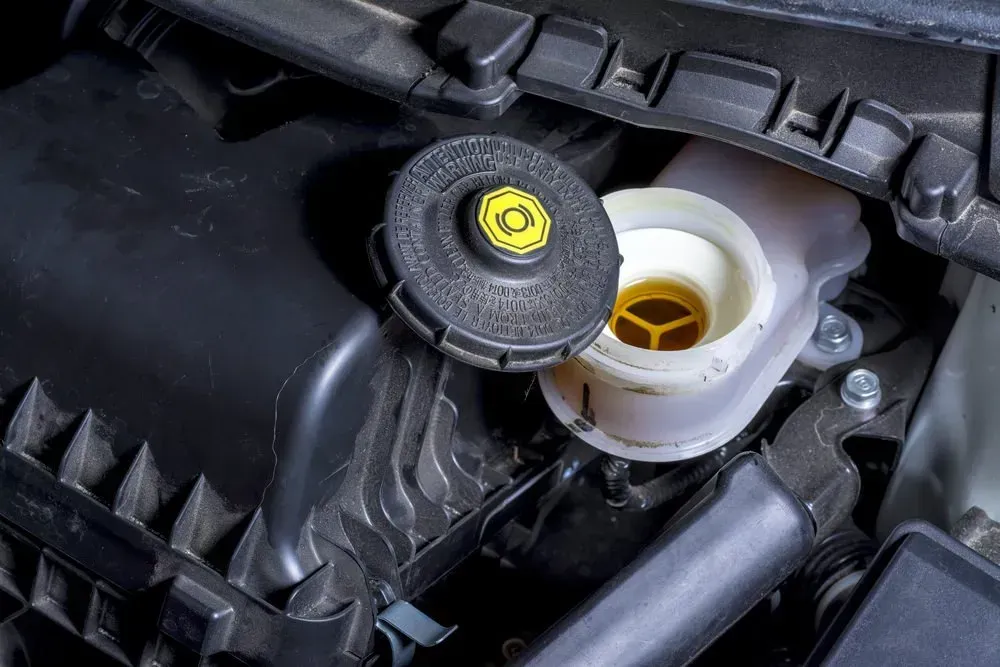
At the back of the engine compartment, you will find the brake fluid reservoir. First things first, you should be extra cautious to clean the reservoir exterior before you even think of opening it. Keep in mind that any contamination inside the reservoir can obstruct the effectiveness of the fluid. Next, open the brake fluid reservoir using a screwdriver and confirm if the fluid is at the half-inch level; anything below that should be topped up.
Also, if the brake fluid in the reservoir is too dark, it ought to be changed.
43. Air Conditioning Coolant
Not to be confused with the radiator coolant, the air conditioning coolant (refrigerant or Freon) specific purpose is to serve the A/C system by turning hot air into cold air. Unlike the rest of the fluid, checking the air conditioning coolant level is somehow complicated and you will need A.C. gauge and thermometer.
Anyway, the first step of checking the air conditioning refrigerant level is to activate the /AC system and set the lowest temperature. Afterward, you need to open the hood and connect the A/C gauge to the low-pressure line (check on the manual to know its location).
If the gauge reads below 25 pounds, it needs to be re-filled.
44. Windshield-Washer Fluid
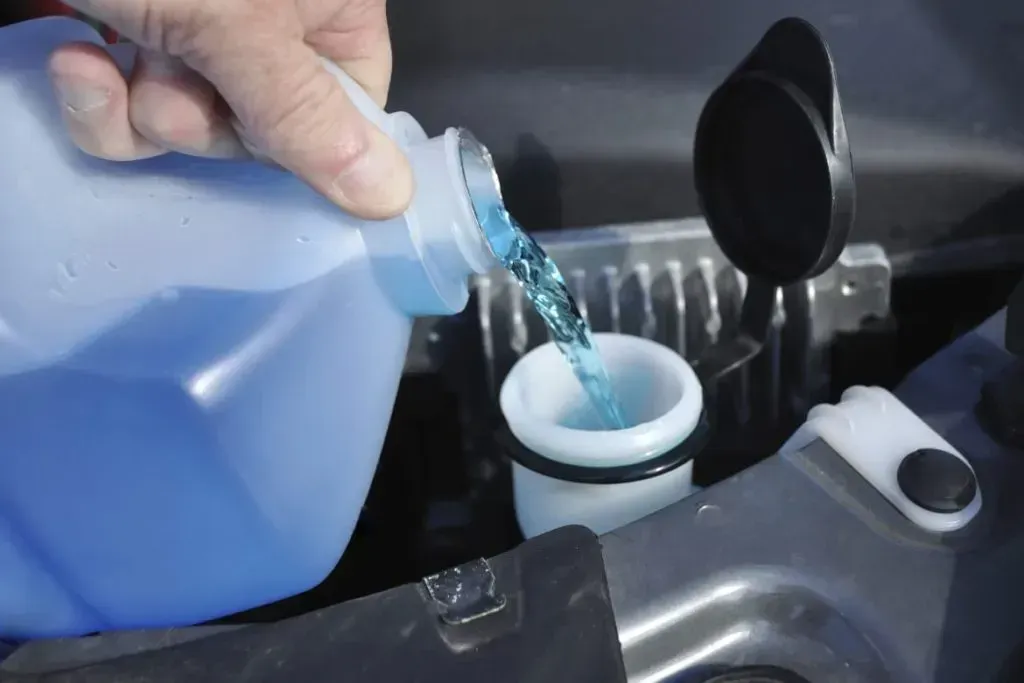
Even though you don’t need the windshield washer fluid to run your engine, it is necessary to clean up your windshield. The washer fluid reservoir in the engine is very easy to identify since it is labeled. Other than that, it is transparent and you can tell if it’s full or empty just by looking at it. If the fluid level is low, you can add your preferred cleaning formulated mixture.
Air Conditioning System
In some places where the weather gets too hot, you can’t stay in a vehicle without an A/C system for more than 5 minutes without getting uncomfortable. Ask any Uber driver the importance of an air conditioning system and they will tell you it can be the swinger between a good and a bad rating. Let’s find out how you should maintain it.
45. Regularly Run It
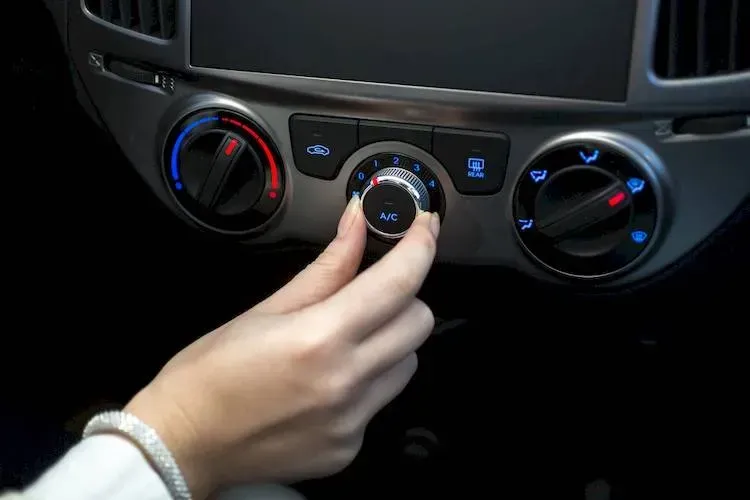
The A/C is like a competitive runner; if it doesn’t run regularly, it will lose its form. Hence, you should try to run the A/C for at least 10 minutes once per week. Make sure when you do it, you adjust to the coldest settings and let the fan peak. Also, regularly running the defroster is equally important for the same reason why you should consistently run the air conditioning system.
46. Schedule Professional Service
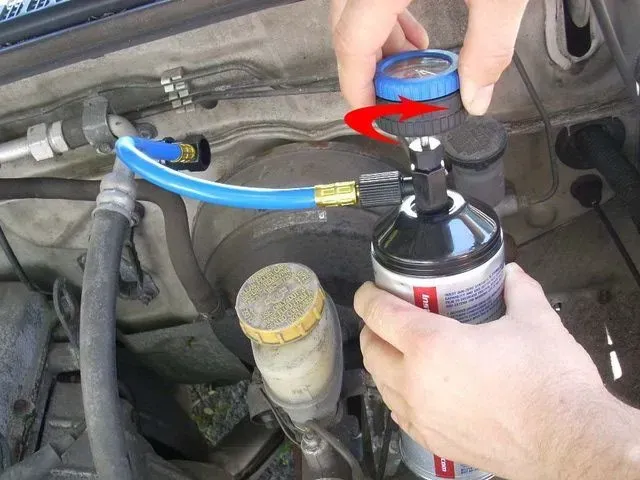
The air conditioning system should be recharged after every 2 years. In order to do that, you should schedule a professional service to lubricate the components and re-fresh the gas. Of course, you can read your user’s manual to verify the intervals.
47. Clear Away Debris
The grills below the windshield can pick up leaves, especially during the autumn. In fact, there are other types of debris that can get picked up whatever the season. Make sure you clean it up because the windshield exterior grill is connected to the air conditioning system and it could be a problem if those leaves and debris clog the condenser.
Maintaining The Perfect Car Interior
The interior of your car is one of those first impression details that are left lingering on most people’s mind. Obviously, if your car interior is filthy, it will depreciate your car value. To put it another way, it could be a determining factor if your date calls you back or not.
Sure, there are parents with little children or pets that make it hard to keep up. Nevertheless, there are a few tricks you can pull up your sleeve.
48. Clean Your Seats Regularly
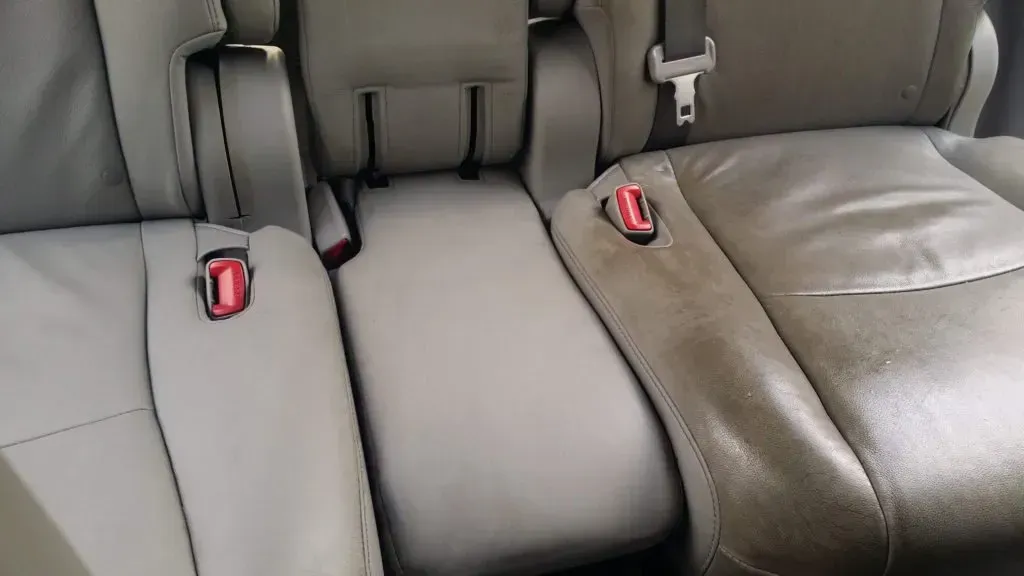
You see, if you don’t clean your car seats regularly, the dirt will accumulate and next thing you know, your car interior turns into a pigsty. For what it’s worth, you should clean your car interior at least once a month to avoid the dirt build up. If you’re too busy to do it, there is always a car wash around the corner or you can bribe your kids to do it.
49. Apply Protective Creams
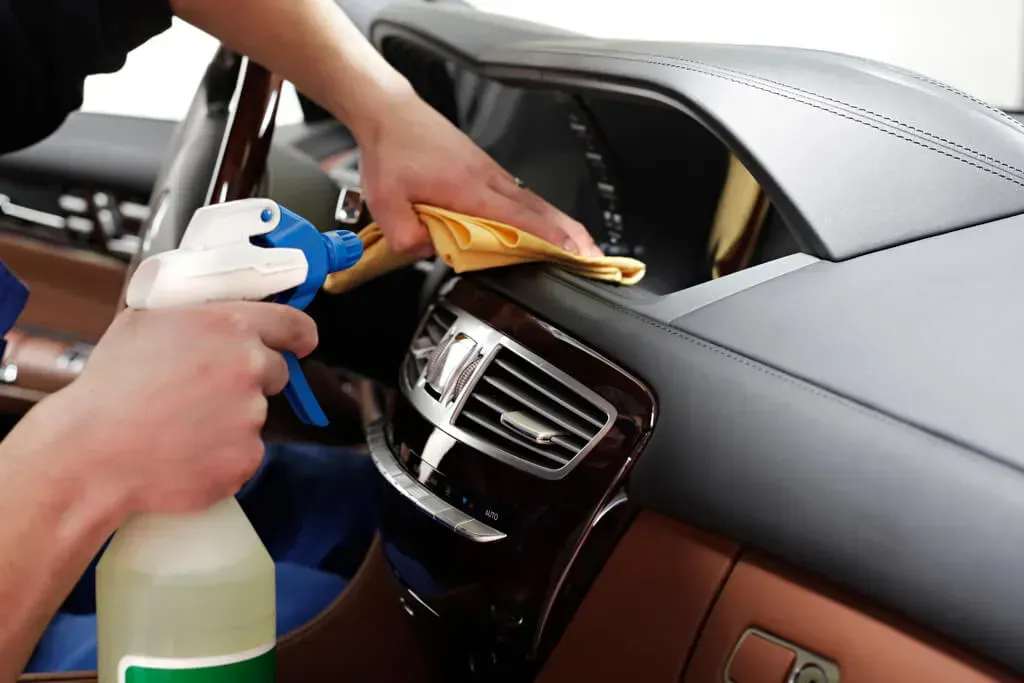
Just because your car is tinted, it doesn’t mean the vinyl or plastic coated interior parts can’t become brittle, dry or vulnerable to cracks due to sun exposure. You do open your windows, don’t you? Even if you rarely open the windows, those parts can just wither due to old age.
Anyway, you can apply a protective cream to safeguard those parts. Note:
Don’t apply the protective cream on the steering wheel and pedals since they would become slippery.
50. Use Vacuum Cleaners
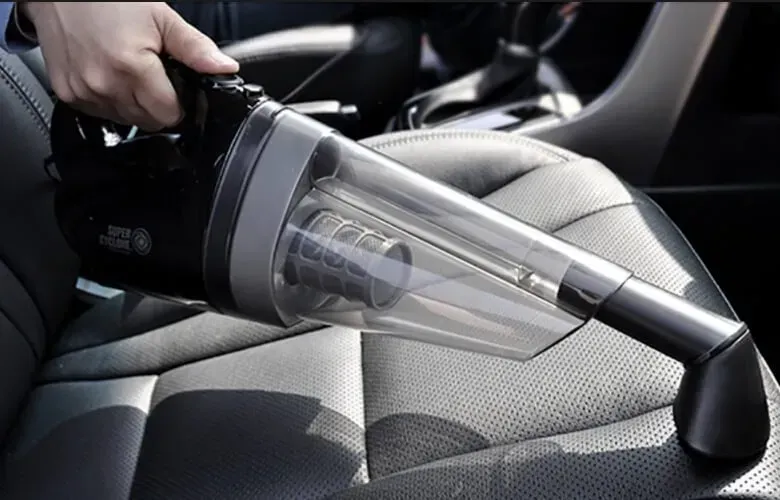
It doesn’t make practical sense to clean those far-reachable parts under your seats or carpet with your hands. If you do so, you will only end up wasting your time. Alternatively, a vacuum cleaner can suck up the grains, sand or stones that you probably won’t even notice with your eyes. The best part? There are small handheld car vacuum cleaners that run on batteries.
51. Remove The Stains Immediately

Stains can be a pain in the ‘you know what’; the faster you do it, the easier it will be for you. Leather seats are the easiest to remove stains but if you want to remove the stains on cloth-lined interiors or carpets, you have to sweat it.
For instance, to remove coffee stains, you have to dilute the stain with cold water and soak it with glass cleaner. On the other hand, you can remove grease stains using paint thinner, salt, and vacuum cleaner.
52. Headliners And Visors

The headliner is that protective cover on the ceiling of your car. The visor is what you use to block distracting sunrays when driving. Both the headliners and visors are prone to wear and tear if left neglected. Make sure you keep a closer eye on both parts to foresee and fix any small rips that may turn into a bigger problem.
53. Trash Bin
A car trash bin is not much of a necessity but it can help to keep your car interior cleaner than a whistle. Where else are you going to throw those candy wrappers, used tissues and empty cans? Remember, you can get fined for throwing trash out of your window.
Exterior Car Care Tips
The exterior of a car is delicate and if you don’t take care of it with soft hands (not literally), you may damage the paintwork. It’s not just about the cleaning but making your car look like it just came out of a showroom. In case you’re curious to find out, here is the memo:
54. Wash The Car Weekly
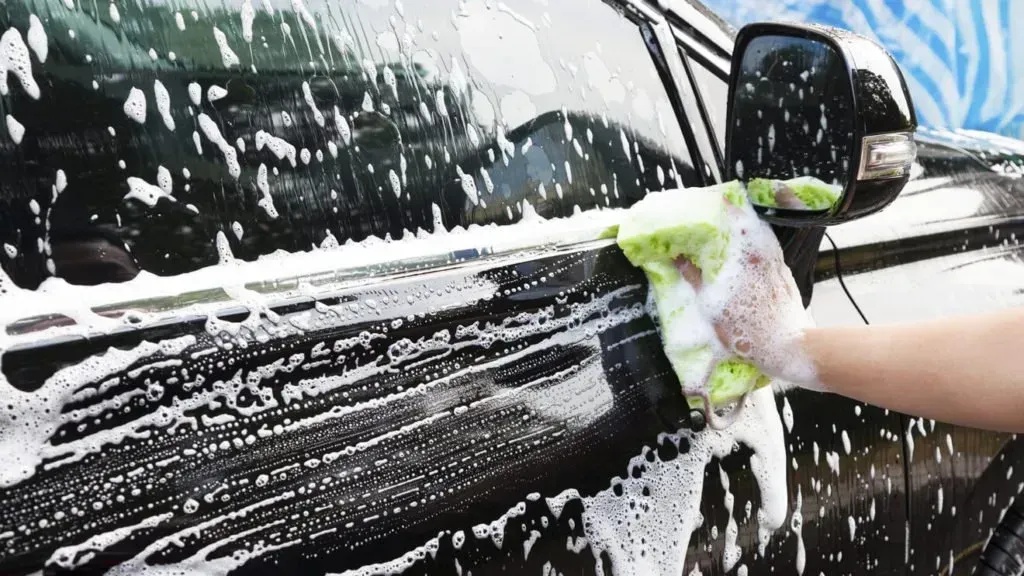
Maintaining hygiene is a routine habit. If you’re one of those people that drive to work every day,
washing your car weekly is crucial to get rid of the accumulated dust, mud and dirt. A point to note is that you should strictly use cleaning formula designed to wash vehicles since some household liquid detergents and dish cleaners can do more harm than good on your car’s paint.
55. Wax At Least Twice A Year
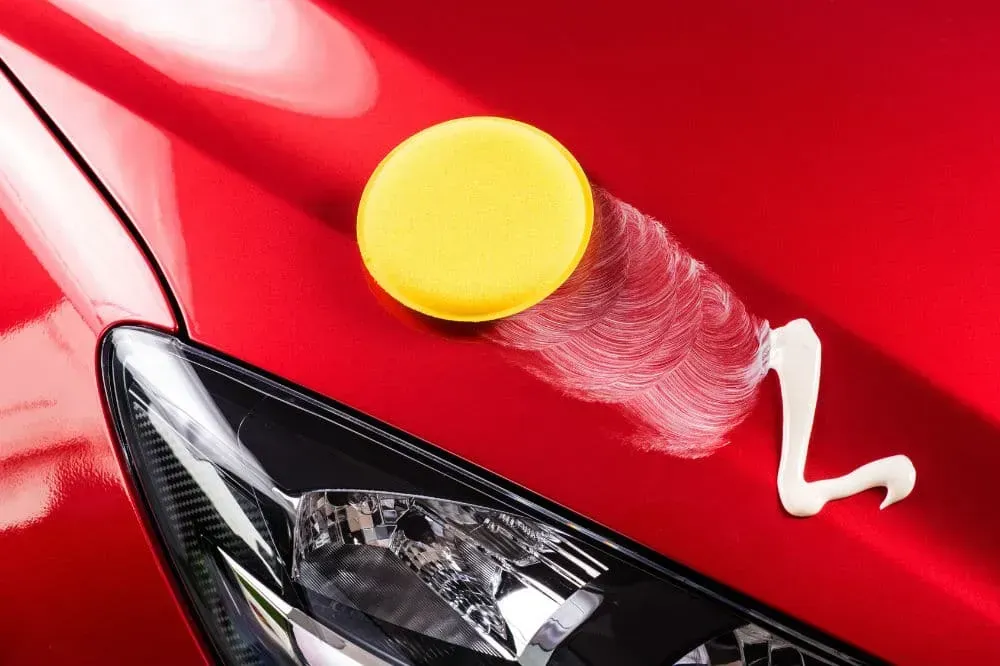
There is something about a waxed car that makes it very attractive. Maybe it brings back that aura or glow of a brand new vehicle. Apart from making your car pretty and shiny, the car wax protects your vehicle from UV rays. Not to forget, those bugs will just slide off your paint.
On average, you should wax your vehicle at least twice a year.
56. Schedule Annual Professional Detailing
Professional detailing involves cleaning your car thoroughly both inside and out – every last inch of your vehicle that can be cleaned or washed is covered. Sure, it is costly than a typical car wash but it’s absolutely worth it. Not convinced yet? How about it may double your resale value and make your vehicle crispy clean. Actually, professional detailing should be complemented with a waxing service.
57. Keep The Car Under Cover

If it isn’t the direct sunlight that gets your car, it could be the storm, snow, hail that damages your exterior if you don’t cover it. Beyond that, you also know what those birds drop from above. A car cover is an ideal method of shielding your car against such scenarios especially if you don’t park in a garage.
58. Spot Check The Paint Frequently
It’s normal for car paint to fade off after years of exposure to rain, sunlight, snow, dirt, and wind. Even oxygen plays a role in speeding up the paint deterioration process and there is nothing you can do about it. However, you can spot check the paint and schedule the car for a painting service before it gets too serious. Some common signs your car may require a basic paint job include; discoloration, dark spots, peeling, dents, and scratches.
Exhaust And Emissions System
The exhaust system could be the last thing that you think when it comes to your car, but a worn out exhaust system can produce a lot of harmful emissions. Sometimes, the exhaust smoke can sneak into your car which is dangerous since it contains carbon monoxide. If you want to take care of your exhaust system and cut down the emission significantly, the things to check are:
59. Get The Check Engine Light Checked
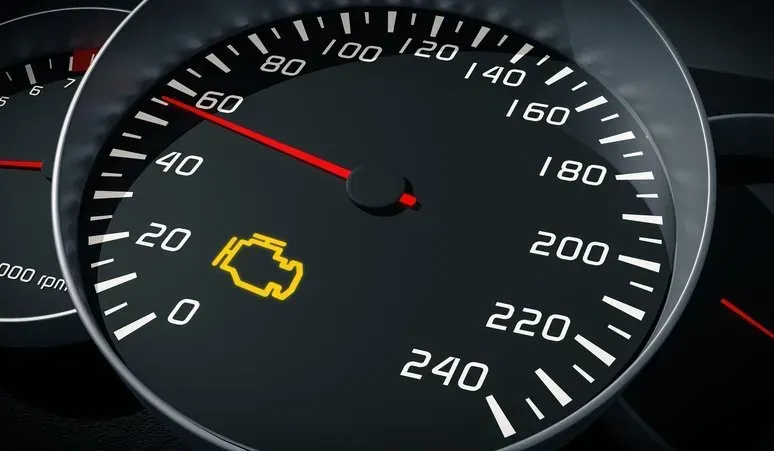
One way to know if there is a problem with the exhaust is to check the engine light. Granted, there could be a lot of reasons why that check engine light comes on, but in most cases, it may a problem connected to the emission system. Fortunately, you can run the On-Board Diagnostics (OBD) to pinpoint issues such as failed oxygen sensors, exhaust system break down, loose gas cap, engine misfire, and bad catalytic converters.
60. Repair Broken Components

Every single component that makes up the exhaust system matters regardless of how small it may seem. It’s called the butterfly effect; a phenomenon where those minor overlooked details can make a big difference in the grand scheme of things. For example, the exhaust hangers play a supplementary role but if those hangers don’t hold the pipe, the whole system can get damaged. That’s why it’s important to repair every single broken component connected to the exhaust system.
61. Fix Leaks Quickly
As long as you drive your car, your exhaust system will be exposed to intense vibration, high pressure, and too much heat. The likely outcome is a recipe perfect for leaks. The source of the leakage could be anywhere – from the exhaust manifold, gasket to the pipe. Whatever the root causes, make sure you fix those leaks as quickly as possible.
Power Steering System
An excellent power steering system is vital to controlling your vehicle. On the other hand, a faulty power steering system will not only make it harder to control your vehicle but it may also cause imbalance on your tires. The antidote? Read and learn.
62. Keep Fluid Clean And Full

For the power steering to be effective, it needs power steering fluid. However, if the fluid isn’t kept clean and full consistently, you will have some major problems. The only way you can lose power steering fluid is through leaks and if you suspect anything, inspection won’t hurt. Also, be careful not to contaminate the fluid.
63. Inspect And Replace Pump When Necessary
There is a hydraulic pump that injects the fluid through the power steering system. In the event that the pump backfires, the power steering system won’t be lubricated. Well, you can have the pump inspected during a maintenance check just to be sure if everything is okay.
64. Inspect Hoses
If your power steering system isn’t properly lubricated and the pump isn’t the cause, then it could be the hoses. That’s because the hoses cover the same functionality of aiding the fluid flow through the system – almost as the hydraulic pump but not exactly. Similarly, the inspect hoses can wear out and regular inspection is a good idea.
65. Watch Out For Symptoms Of Failure

A power steering failure is very serious and if left ignored, it may cause an accident. The good news is you can fix it before it gets too far. Just watch out for some of these symptoms; tight steering grip, difficult steering maneuver, and noises when turning. Don’t wait for divine intervention if you notice any of those symptoms but instead, book an appointment with a specialist.
Suspension System
Ever traveled on rough terrain and when you hit the bumps even at a slow speed, you feel like there is an earthquake? Yet, you could swear it wasn’t always like that when the car was new. You can probably tell there is an underlying problem because you’ve driven other cars and the shock wave doesn’t knock your socks off.
What to do? It’s time to do a thorough check up on your suspension system since it is designed to absorb vibrations and other impact forces when you hit the road. Now, pay closer attention.
66. Do A Thorough Inspection Of The Suspension System
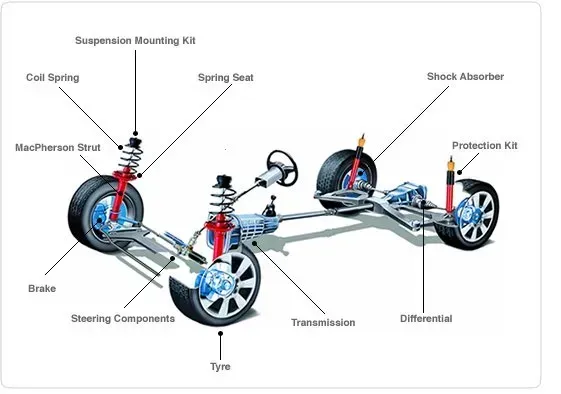
The suspension system needs to be inspected after every 50,000 miles. Alternatively, you can inspect it every time you schedule an oil change or replace your tires. Remember, the suspension system is very broad and it doesn’t just include the shock absorbers and struts but also the linkages, steering system, springs, bearings, and tires.
67. Inspect The Rubber Bushings
The bushings are usually cushioned with rubber to absorb vibrations and regulate movement between the suspension parts. Unfortunately, the rubber can get exhausted after a long period of time thus affecting the overall performance. If it happens, the most prone areas you should inspect are the struts rods, track bars, sway bars and control rods.
68. Watch Out For Visible Signs Of Cracks, Swelling And Oil Contamination
Okay, checking the suspension parts for signs of swelling, contamination or cracks can be challenging for a beginner. If it isn’t your forte, you can schedule an appointment with a mechanic.
However, if you don’t mind doing it yourself, you have to go under your car to give a closer look to the shock absorbers and springs. Don’t forget the hydraulic system, linkages, bearings, joints, and the wheels. Basically, all the parts that make up the suspension system.
69. Get Rid Of Debris Or Oil Contamination On Rubber Bushing
The rubber bushing doesn’t need oil for lubrication. In fact, oil is the most frequent trigger of rubbing bushing failure followed closely by debris and age causes. Usually, when the rubber bushing is exposed to oil it becomes too soft to do its job, while the debris prompts wear and tear. You can clean the oil and debris off the rubber bushing using a degreaser.
70. Check The Ball Joints
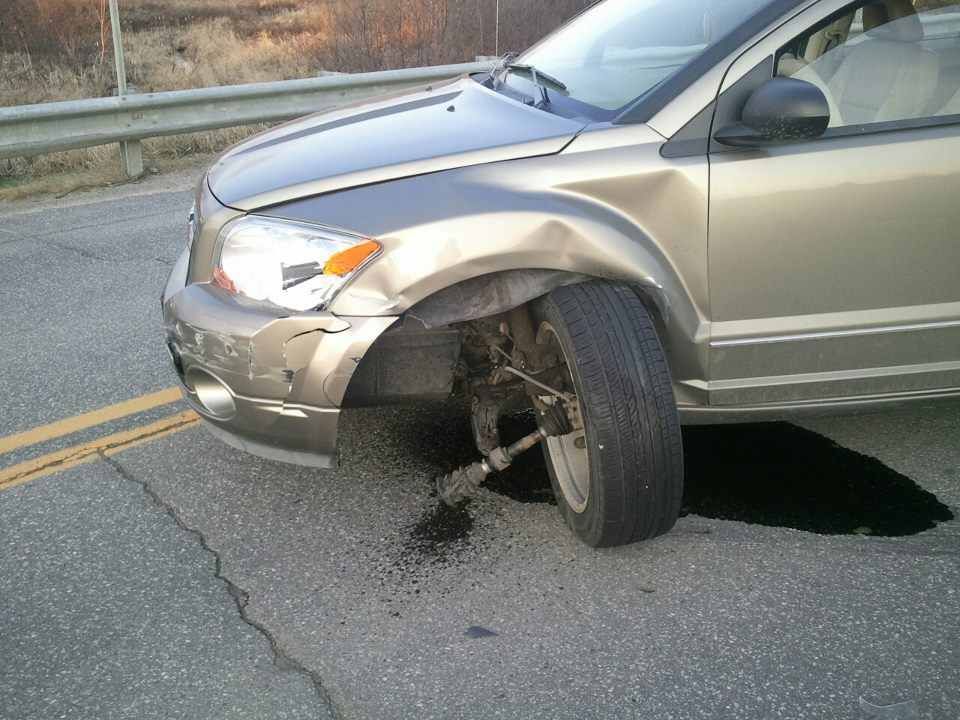
There are two methods of checking the ball joints. The first method is easy and you don’t have to get your hands dirty; just hit the road and if you hear any banging sounds when driving or feel the steering wheel stray or vibrating too much, then you’ve likely got a suspension ball joints problem.
The second method involves jacking up the car, removing the wheels and closely examining the ball joints. When inspecting the ball joints, you have to watch out for signs of grease leakage, rust, damaged rubber boots or anything that indicates you need a replacement. Moreover, you can check if the ball joints are loose by using a pry bar.
71. Re-Fill The Grease Fittings

Compared to cars, most trucks come with grease fittings on the suspension system. To avoid any future complications, the fittings should be topped up with grease after every oil change schedule. It can be done during a professional service check or you can do it yourself using a grease gun.
72. Inspect The Struts And Shocks For Oil Leakage
To check for signs of oil leakage on struts or shocks, you have to uplift your car using a jack stand for a better angle. Since they’re part of a hydraulic system, if you see any oil leakage or confirm that it is wet, you should schedule for a replacement.
73. Perform A Bounce Test
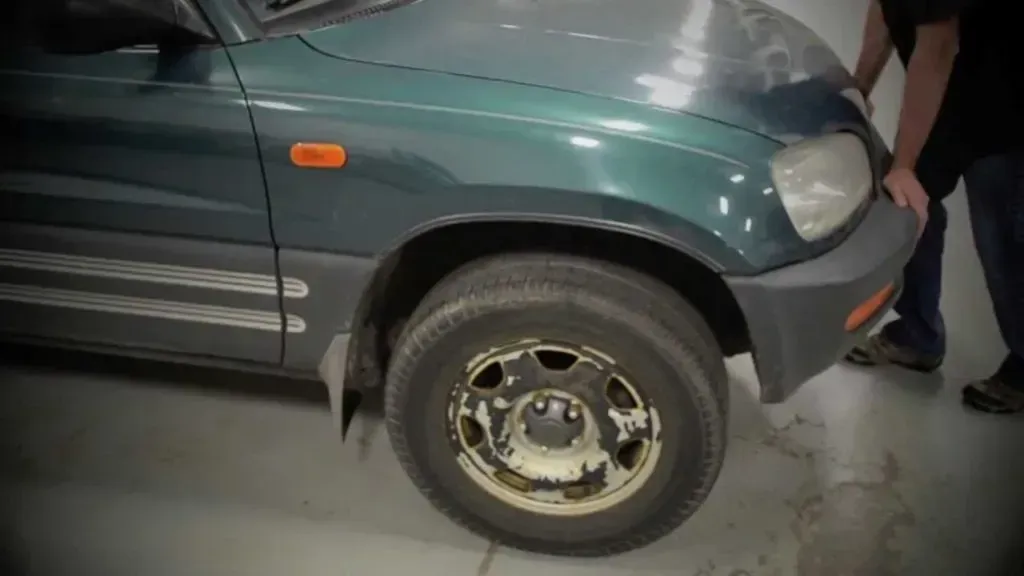
If you want to verify if the struts or shock absorbers are in good condition, you should perform a bounce test. How is it done? Simple, just put pressure at the seam or car corner and push it down to create some type of bouncing motion. If the car bounces more than two times, it is an indication that the struts or shocks ought to be changed.
Tips For Windshield Maintenance
A weak or cracked windshield increases the chances of injury during an accident. If you’re wondering, the windshield absorbs the collision force, holds up the roof during a rollover and helps the airbags to deploy. Anyhow, check out the following tips for maintaining your windshield.
73. Don’t Slam Your Doors
It is those little things that we do like aggressively slamming the door that comes back to haunt us. Apparently, door slamming stimulates a vibration effect that weakens the windshield over a long period of time. Actually, if you have chips that need to be fixed, you will only make it worse.
75. Avoid Parking Under Direct Sunlight

Unless you live underground, there is no way you can completely evade direct sunlight. Regardless, you should sort out to park under the shade or indoor parking lots. Why? On a long enough timeline, the UV rays can compromise the strength and tint of the windshield. Also, the chips can get affected by fluctuating temperatures.
76. Repair Small Chips Immediately
You see that small chip or crack on the windscreen that if it was any smaller, you would probably need a magnifying glass to view it? As it turns out, that very small chip on your windscreen can develop into a bigger crack forcing you to part with more money to fix it. In other words, if you don’t get it repaired immediately, you may regret it.
77. Clean & Replace Your Wipers
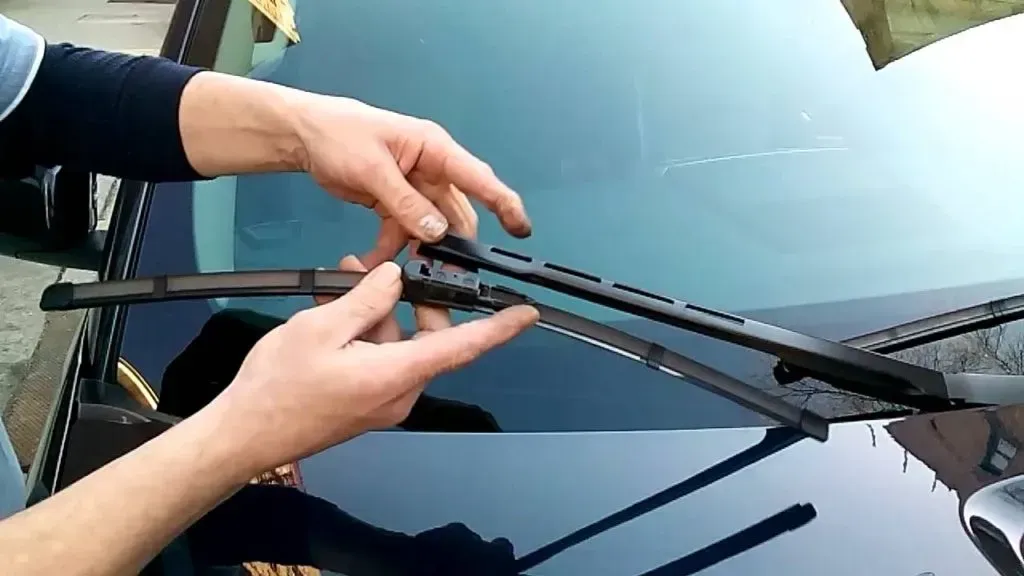
It’s astounding that there are a lot of folks who don’t know that wiper blades should be replaced after 3 to 6 months depending on where you live and how often you use them. Of course, if you live in places where there are frequent sand storms, the sand particles can get stuck in your wipers. Those who live in snow regions should also switch to winter blades during the colder months.
Otherwise, you should thoroughly clean your wipers whenever you’re washing your car once a week. It won’t even take you more than 5 minutes and you can do it at the gas station.
78. Don’t Use Ammonia-Based Glass Cleaners
The ammonia glass cleaner used to clean your home windows should be kept off your car windows. Seriously, the car windows are tinted and ammonia ingredients will do more harm than good. As an alternative, you can use alcohol, vinegar or a special automobile window cleaner formula. On top of that, a microfiber or cotton towel can come in handy to clean the windshield without scratching it or leaving streaks.
Winter Car Care And Maintenance Tips
Definitely, the toughest season to maintain your vehicle is during winter. The snow and moisture can cause rust while the freezing cold temperature is hard on the battery, tires and fuel economy. Beyond that, sometimes below zero Fahrenheit temperatures can make some car parts extremely brittle. Nevertheless, there is an effective modus operandi to safeguard your car during winter.
79. Protect Your Exterior
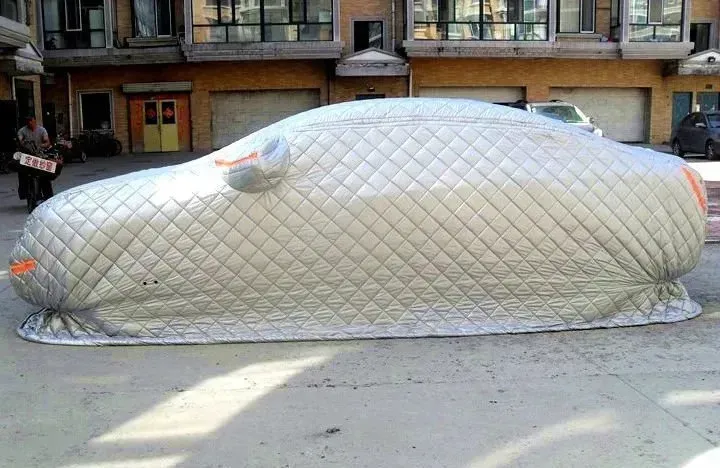
When it’s snowing and your vehicle is parked outside, you can use a car cover designed for winter. Otherwise, you can rub off the ice and snow using an ice scraper and snow brush tools. Another good way to protect your car exterior from snow and road salt is by applying top-quality car wax.
80. Change Your Oil
The most recommended oil to put in your engine during winter is synthetic oil. That’s because synthetic oil has better viscosity than conventional oil under low temperatures. If full synthetic oil doesn’t work out for your engine, you can use a synthetic blend which combines both synthetic oil and conventional oil. Even so, you should read your user’s manual just to be sure which oil is appropriate for your vehicle.
81. Maintain Your Battery
The battery is usually one of the first car parts to develop a problem during winter if left exposed in the cold for too long. As it goes in chemistry, freezing temperature slows down the ability of a battery to produce electrical energy which induces a faster discharge.
Needless to say, there are many people who don’t drive their cars regularly during winter to keep up the charge in their batteries. So what’s the other option? You can park your car in a garage and use a trickle battery charger to prevent discharge issues. Also, if your test your battery and find out it’s too exhausted, you should replace it before winter.
82. Ensure Your Visibility
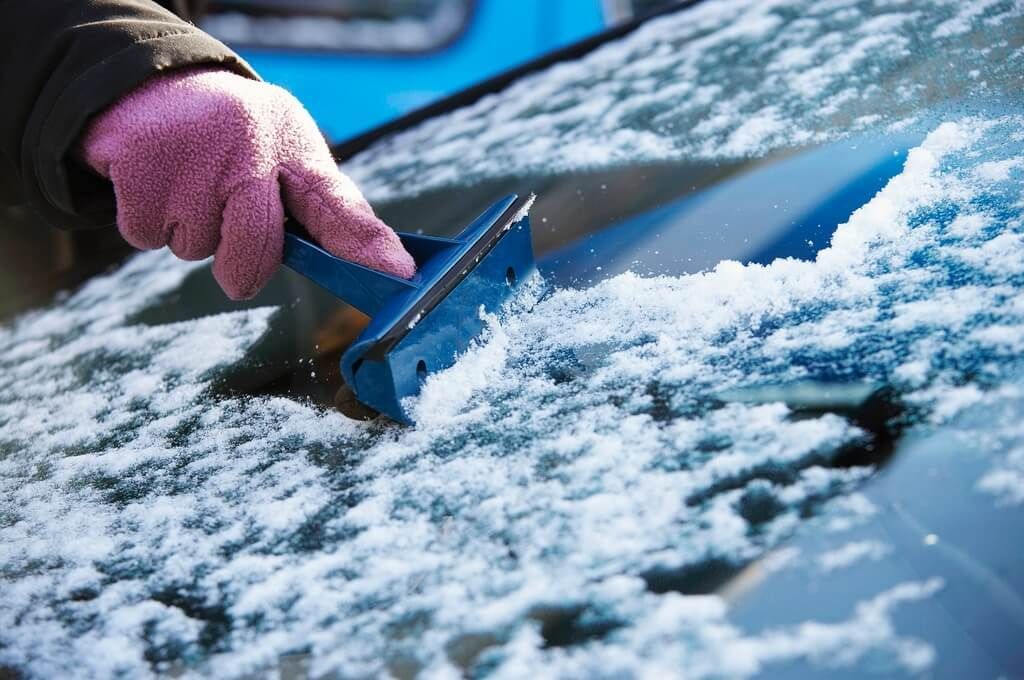
You don’t want to drive during winter without seeing where you’re going, do you? Moreover, it’s a hazard to drive with an ice sheet on your windscreen since it could fly off at high speed and critically injure somebody behind you. Always make sure you remove any stuck up ice on the lights, side mirrors, and windshield. Also, you can add de-icing fluid into the windshield water tank.
83. Inspect Your Tires
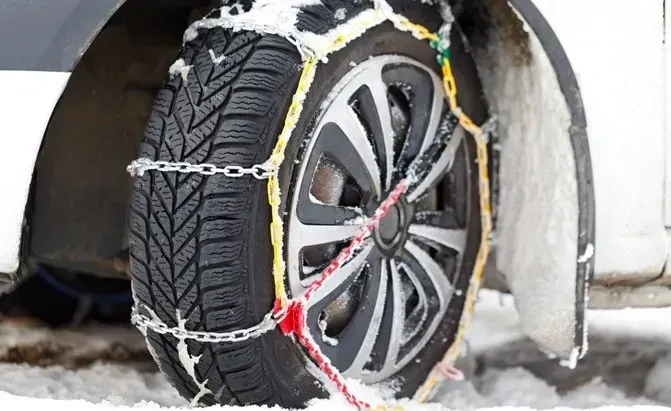
The roads can get very treacherous during winter and you may need special winter or snow tires. Check out for tread depth using the penny test and if the tires don’t meet the criteria, they should be changed before winter. Similarly, low temperatures can make your tires under-inflated and you should remember to double check the air pressure before you drive out.
84. Check Your Antifreeze
As the name suggests, the purpose of antifreeze is to prevent the water circulating in your engine from freezing. Keep in mind that the water regulating your engine can freeze and expand during winter causing serious damage. In any case, if you want to know the antifreeze’s consistency, you could use an antifreeze tester.
85. Clean Your Fuel Injector
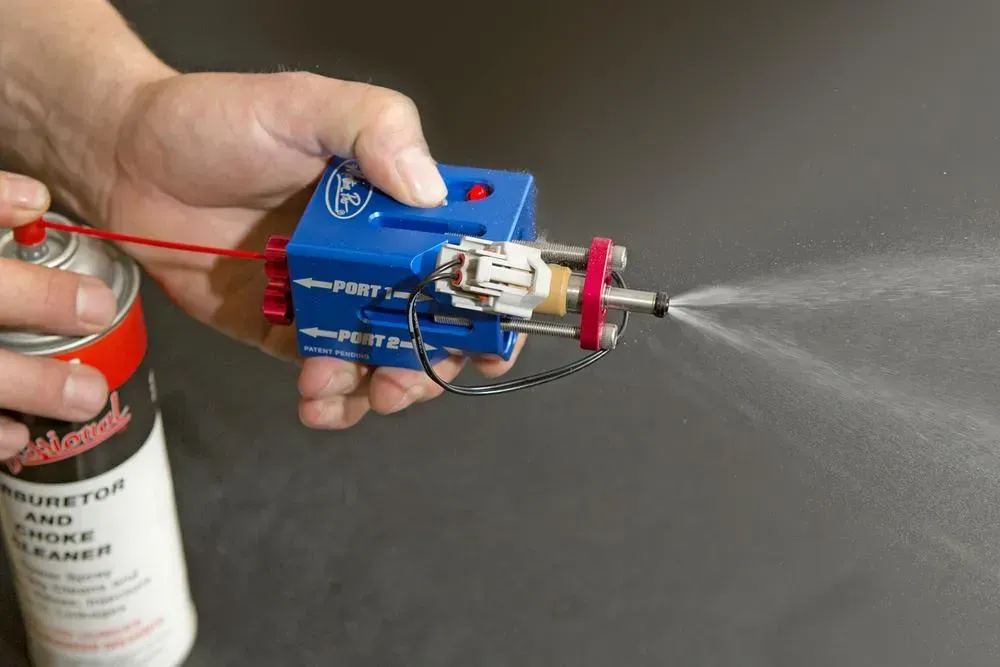
Quite often, water gets stuck in the fuel system. Eventually, the temperature drops during the coldest season and the water freezes. Well, you can probably guess what happens next – an expensive cleanup affair. However, you can clean the fuel injector before the weather forecaster announces the snowfall. To your advantage, there are over the counter fuel injector cleaning formulas that you could use to extract water from the fuel system and prevent the freezing effect.
86. Do Your Diesel Diligence
Diesel tends to gel during winter affecting the overall performance of your vehicle. But there is a way you could prevent it by introducing diesel anti-gel treatment into your fuel tank. Beyond that, pay closer attention to the diesel exhaust fluid (DEF) which needs to be refilled occasionally. Most vehicles come with a built-in warning system to alert you if the DEF levels are low, so it won’t be much of a concern.
87. Grab Your Deicing Chemicals
The door handles can get covered in ice during harsh winter making it hard to open the door. Before you try anything risky that may leave your hand injured due to a piece of sharp ice, it is wise to apply deicing chemicals. Not only will the deicing formulas get rid of the ice on your door handles, but it also helps to lubricate the door locks. The best part is that they’re cheap.
Note: Please choose a de-icing formula that won’t corrode your car’s paint.
88. Inspect The Radiator Cap And Thermostat
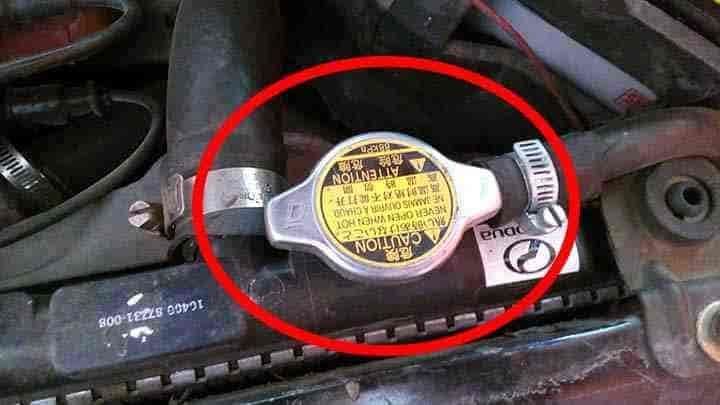
It would be a waste of time if you put antifreeze in your engine only for the radiator or thermostat to leak the content. It probably takes less than 5 minutes to inspect and even if you find something is off, it would be cheaper to replace the radiator cap or thermostat immediately rather than wait and suffer the consequences.
89. Keep An Emergency Kit In Your Vehicle
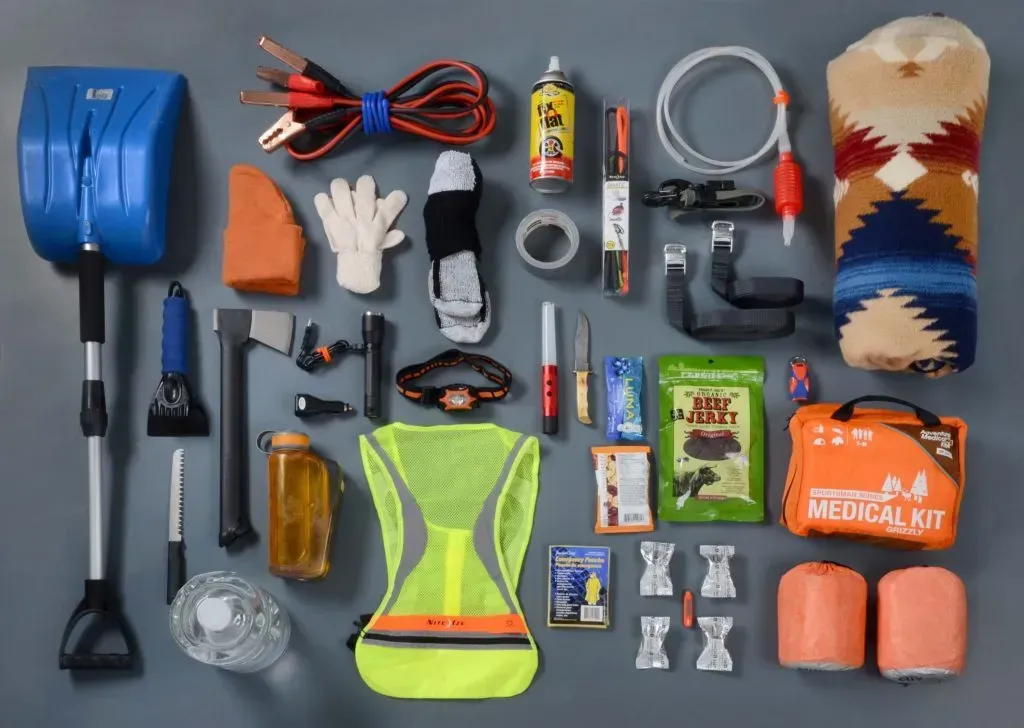
You’ve probably heard on the news before; sometimes, the snowfall can be so harsh leaving people stranded in remote locations. It’s even worse if your car breaks down since it could be dangerous to stay outside in the freezing cold for too long. To be on the safe side, you should carry an emergency kit in your vehicle. Some of the basic items to pack include canned food, water, blankets, flashlights, shovel, jumper cables, power bank, back-up phone battery, salt, and an emergency flare.
90. Check Your Lights
It’s crucial for other drivers to notice your lights on the road. Inspect your headlights and if they’re dim or yellow, they should be changed pronto. In addition to that, moisture stuck inside the tail lights or headlights is a common setback during the coldest season. To remove the moisture, you should unlock the headlight assembly, wipe off the moisture using a cloth, insert silica gel pack to absorb the moisture and re-assemble the lights.
Smart Car Cleaning Hacks
Let’s be honest, sometimes it can be hard to keep up with expensive cleaning products for your car. Perhaps some days you could run out of car cleaning products and you don’t have time to go shopping. There is a solution though; you could use cheaper but very effective methods to clean your car. Heck! You can even improvise it. If you’re keen to learn, check out some smart hacks to help you out.
91. Use Makeup Brush To Clean The Vent
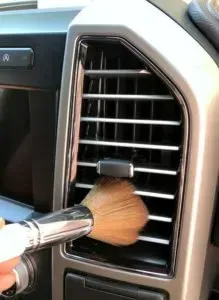
The last thing you want is dust accumulating in your car air vent and making you sneeze whenever you turn it on. The big fluffy makeup brush is an effective tool to remove the dust. It doesn’t even matter if the makeup brush is new or old – just don’t use it with the makeup residue or else you would be substituting the powder for the dust.
92. Remove Pet Hair Using Squeegee
If you really love your pet, you can’t avoid going on a road trip together. Naturally, pets like cats and dogs can be messy and you have to constantly deal with pet hair on your seats. What’s the magic formula? Believe it or not, a squeegee and a spray bottle filled with water. To remove the fur, just spray water but don’t soak it; then wipe over with a squeegee.
93. Eliminate Bad Smell And Dirt Using Vinegar And Baking Soda
In case you want to deep clean your car seats or eliminate odor, a mixture of baking soda and vinegar will do the job. However, you have to make a paste out of it, gently scrub the upholstery using the soda and vinegar mixture, then rinse it off with water.
94. Apply Hair Conditioner Instead Of Wax
Okay, sometimes the wax can take a lot of time to apply. Not to mention, it is expensive. What’s the cheaper alternative? A hair conditioner! If you didn’t know, hair conditioners are made of lanolin which is the same ingredient you will find in waxing formulae. Did I mention it is easier to apply than car wax?
95. Use Olive Oil On Dashboard
Olive oil is not just great for cooking but it can also work like a charm to make your dashboard look shiny and new. Before applying the olive oil, wipe off the dashboard using a towel. Next, apply light olive oil on a different clean towel and gently rub the dashboard with it. Voila! Your dashboard will be unlikely to crack or attract dust.
96. Cover Cup Holders With Cupcake Liners
If you’re fed up of cleaning the cup holder, you could find a silicone cupcake liners and put it under the cup holder. The trick is to let the silicon cupcake holder collect the gunk that spills into the cup holder. So instead of washing the cup holder, you can remove the cupcake liner to wash, rinse, dry and return it.
97. Make Your Own Air Freshener
The next time you put your clothes in the dryer, grab the laundry scent balls and find a mason jar to make an air freshener for your car. That’s right! You have to find a lid for the Mason jar and poke holes in it too. Next, put the laundry scent balls in the Mason jar, put it in your car and let the fragrance keep your car smelling fresh.
98. Apply Used Dryer Sheets To Chase Bugs
Bugs can be annoying especially when you want to wash your car but they keep hiding. Well, you don’t have to sweat it anymore; find used dryer sheets to wipe over your car. Used dryer sheets are capable of removing and repelling bugs from your car.
99. Vacuum & Brush Combo For The Dashboard
Do you see those little spaces on the dashboard that you can’t clean with a microfiber cloth? A brush and a portable car vacuum cleaner could be a perfect combo to suck up the dust. Although, you should make sure the brush bristles are extremely soft to avoid leaving marks on the dashboard.
100. Toothbrush And Toothpaste To Polish And Scrub
Suppose you want to clean your headlights and deep clean the interior of your vehicle but you want to use homemade products? Don’t go any further, a toothbrush and toothpaste will do the trick. For the headlights, you have to wipe it with toothpaste splashed on a rug and rinse it with water. On the other hand, you could use a plain toothbrush to clean those hideous parts inside your car.
101. Apply Alcohol On Wipers
A simple way to prevent the wipers from smudging your windshield is to apply rubbing alcohol. But first, you have to clean the wipers with hot and soapy water to remove dust or dirt. Afterward, drip the alcohol on a clean rag or cotton ball and wipe the blade edges.
Final Thoughts
There are a few things you must have at your fingertips if you want to extend the lifespan of your car.
First, the owner’s manual is like your vehicle’s bible and it will tell you everything you need to know about it.
Secondly, know your car’s limitations and don’t abuse it. Lastly, don’t ignore the subtle signs to do a checkup and replace any worn out parts before it’s too late.
For what it’s worth, if you follow all the maintenance tips included in this comprehensive guide, you can be sure your car will almost last forever.
24 hour service, After hours towing
Loading ...
Missing business hours data / Error occurred while getting the data.
having trouble finding us?
Loading ...
Missing nap lines data / Error occured while getting the data.






